50 Colorful Houseplants to Make Your Home Pop
Welcome to our list of 50 colorful houseplants that will instantly add a vibrant touch to your home decor. Whether you have a green thumb or are new to plant care, there’s a variety here for everyone. Get ready to transform your living space into a colorful oasis!
- African Violet
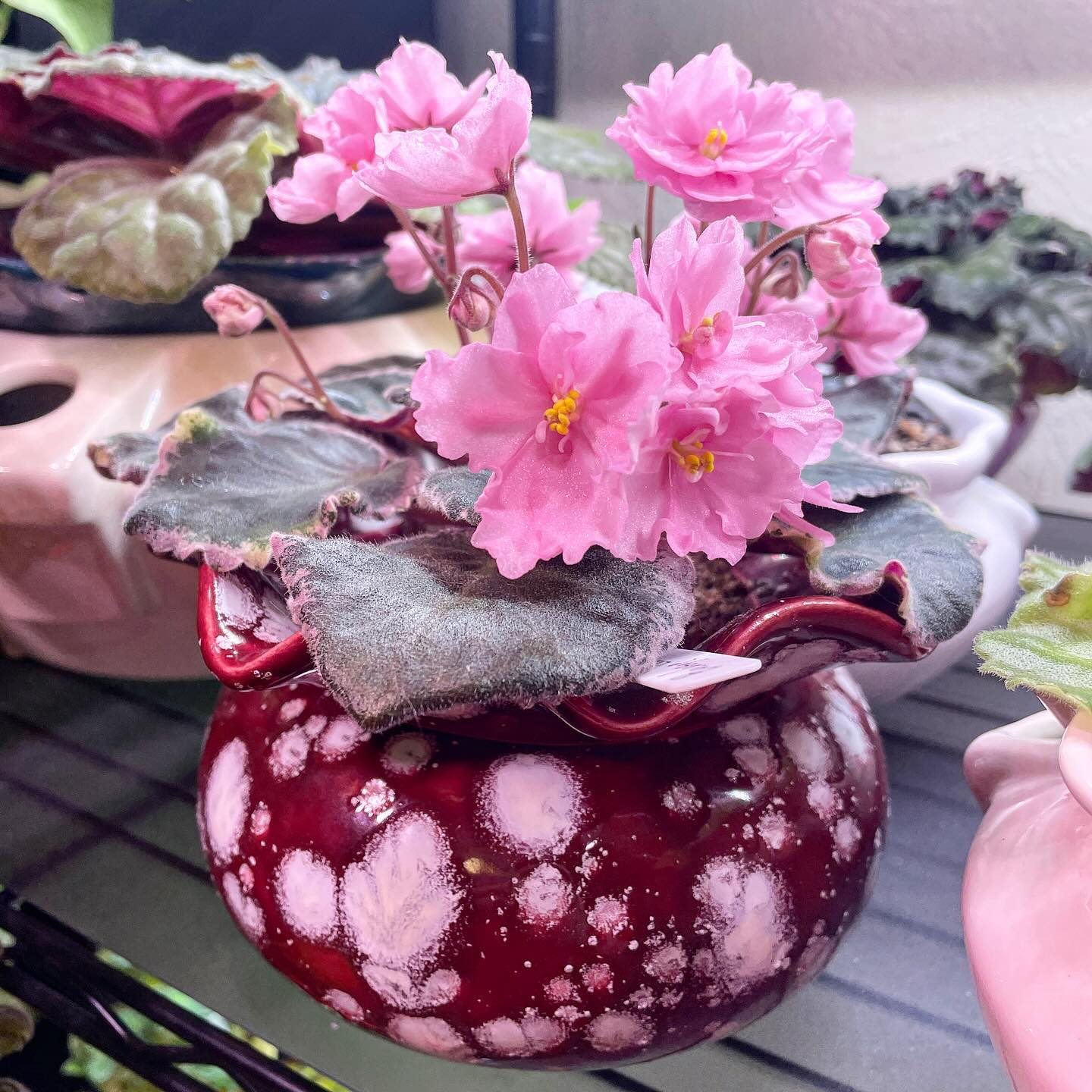
- Why It’s Great: Beautiful clusters of purple, pink, or red flowers.
- Light: Indirect bright light. Avoid direct sunlight.
- Watering: Keep soil moist but not soggy. Water from the bottom.
- Size: Compact, around 6-8 inches tall.
- Soil: Well-draining, slightly acidic soil.
- Feeding: Use a balanced liquid fertilizer every 4-6 weeks.
- Flowering: Year-round blooms.
- Ease of growing rating: Easy.
- Bromeliad
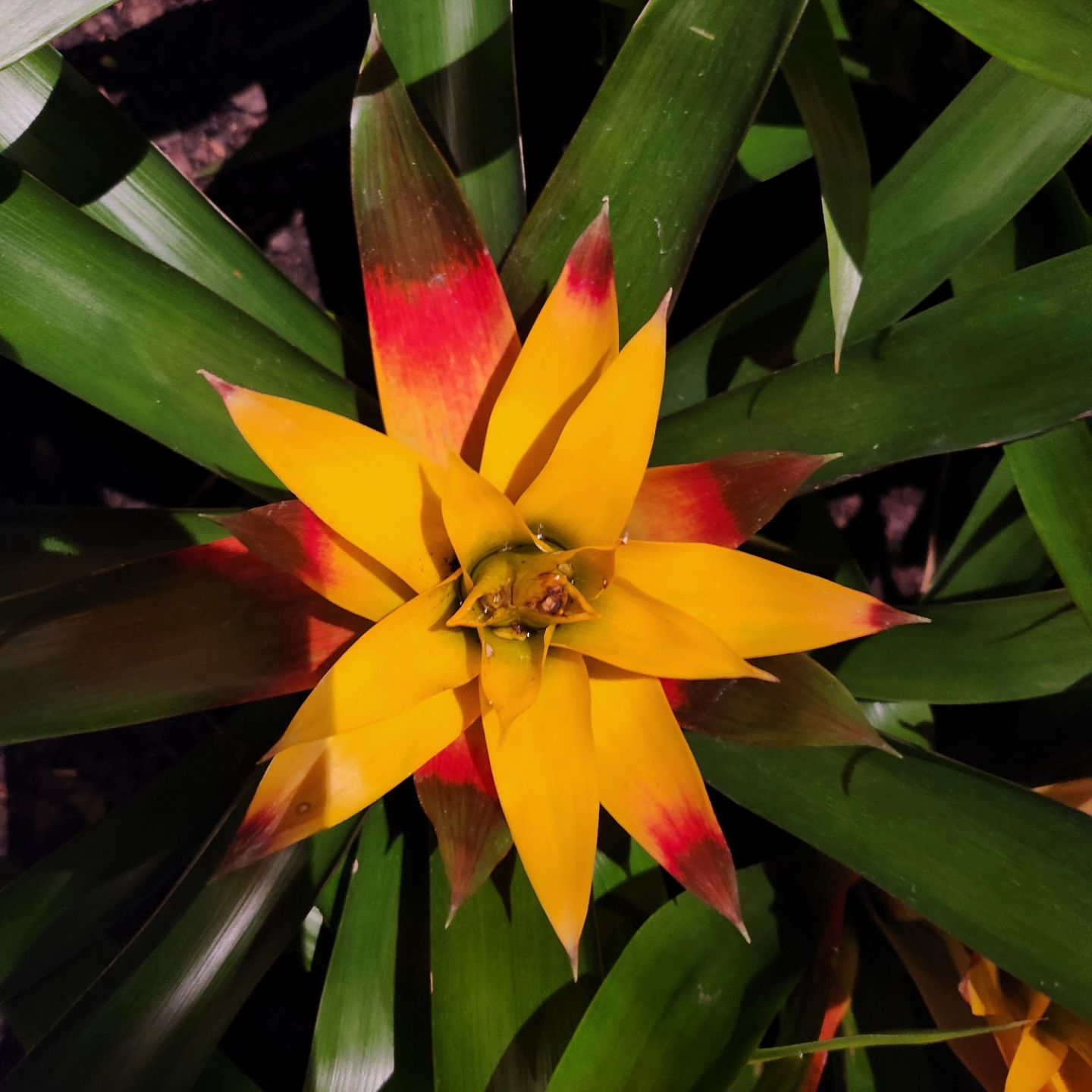
- Why It’s Great: Stunning tropical foliage and vibrant flower bracts.
- Light: Bright, indirect light. Some varieties tolerate lower light.
- Watering: Allow the soil to dry slightly between waterings.
- Size: Varies; can range from a compact rosette to several feet tall.
- Soil: Well-draining potting mix.
- Feeding: Fertilize with a balanced liquid fertilizer every 2-3 months.
- Flowering: Colorful bracts last for several months.
- Ease of growing rating: Moderate.
- Croton
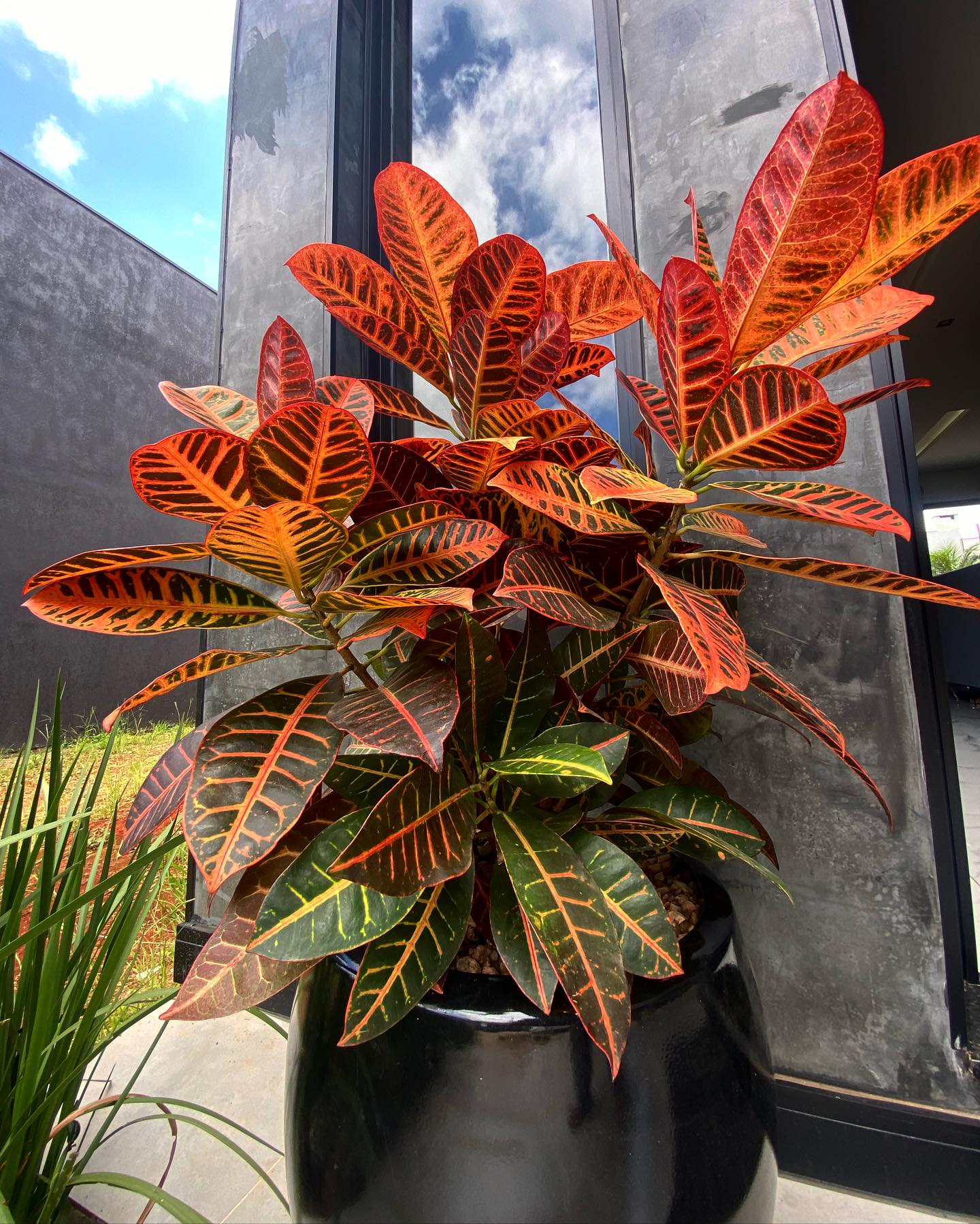
- Why It’s Great: Bold, colorful leaves in shades of red, orange, yellow, and green.
- Light: Bright, indirect light. Some varieties tolerate partial shade.
- Watering: Keep soil evenly moist, but avoid overwatering.
- Size: Can reach 3-6 feet tall, depending on the variety.
- Soil: Well-draining, fertile soil.
- Feeding: Feed every 2-4 weeks during the growing season.
- Flowering: Occasional small inconspicuous flowers.
- Ease of growing rating: Moderate.
- Dracaena Marginata
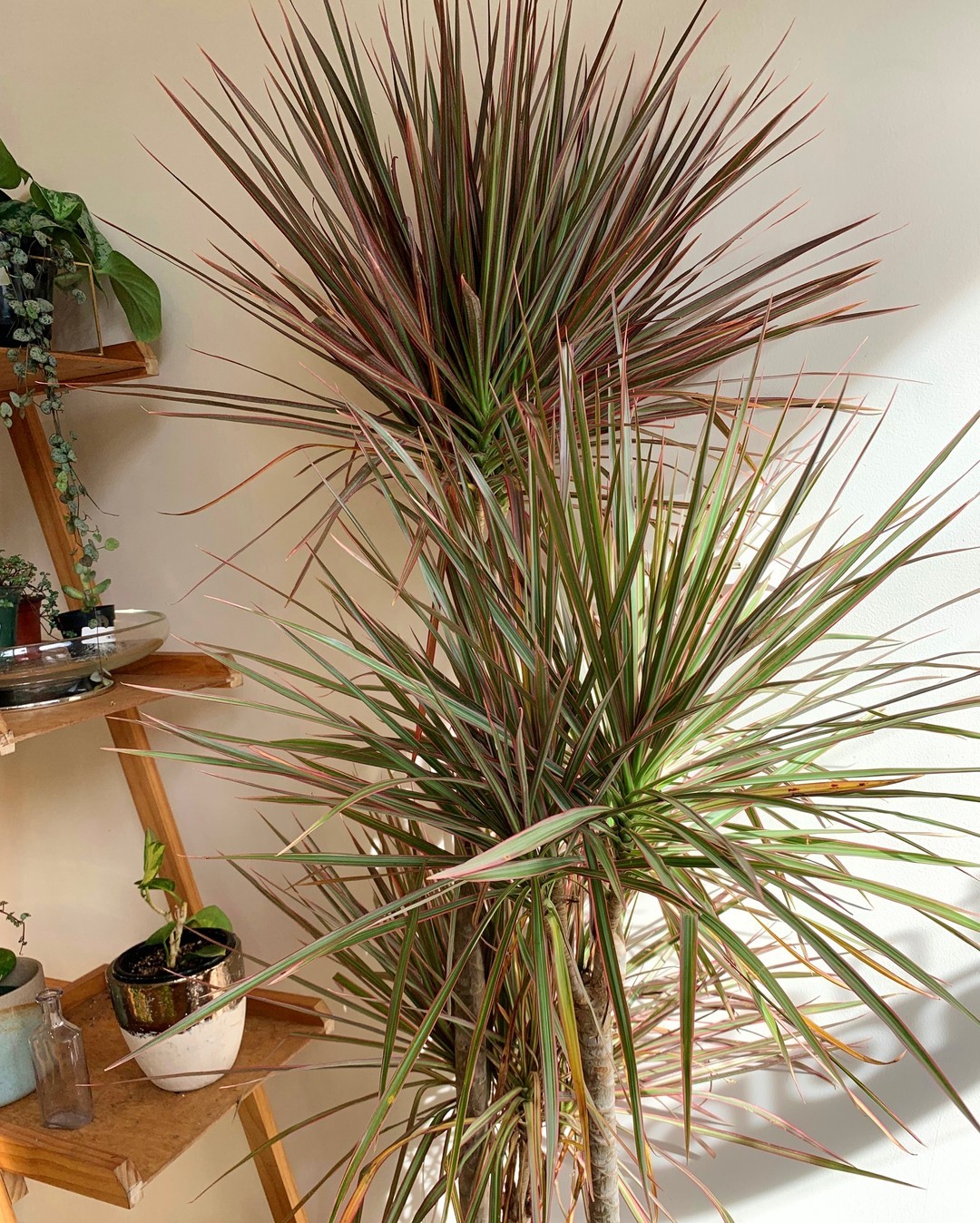
- Why It’s Great: Long, slender leaves with red or pink edges create a striking appearance.
- Light: Medium to bright, indirect light. Tolerates lower light levels.
- Watering: Allow the soil to dry partially between waterings.
- Size: Can reach heights of 6-15 feet.
- Soil: Well-draining potting mix.
- Feeding: Fertilize every 2-4 weeks during the growing season.
- Flowering: Rarely blooms indoors.
- Ease of growing rating: Easy.
- Fittonia (Nerve Plant)
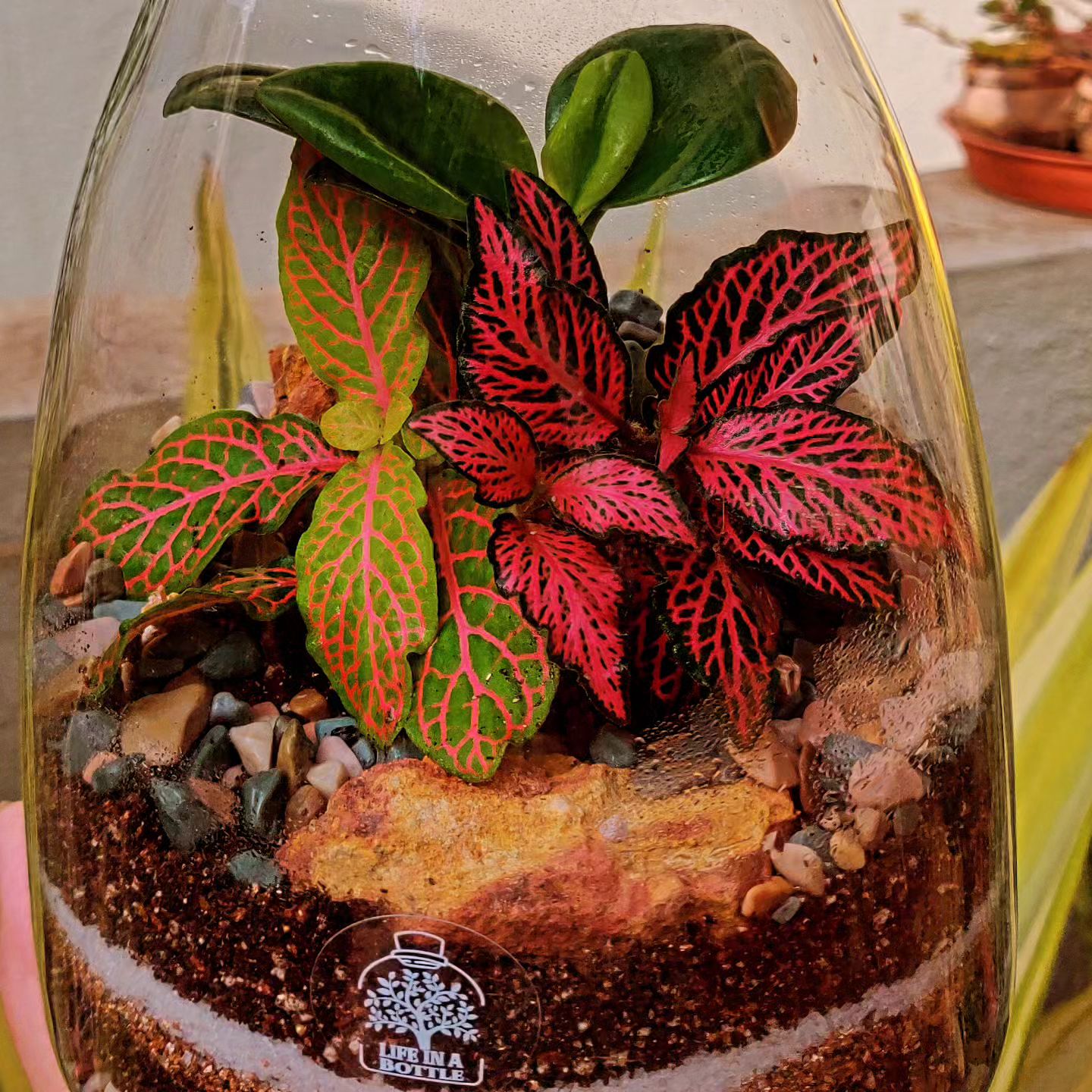
- Why It’s Great: Gorgeous foliage with intricate vein patterns in vibrant shades of pink, red, or white.
- Light: Medium to bright, indirect light. Protect from direct sun.
- Watering: Keep soil consistently moist, but not waterlogged.
- Size: Compact, around 6-12 inches tall.
- Soil: Well-draining potting mix.
- Feeding: Fertilize monthly during the growing season.
- Flowering: Small, insignificant white flowers.
- Ease of growing rating: Easy.
- Peace Lily
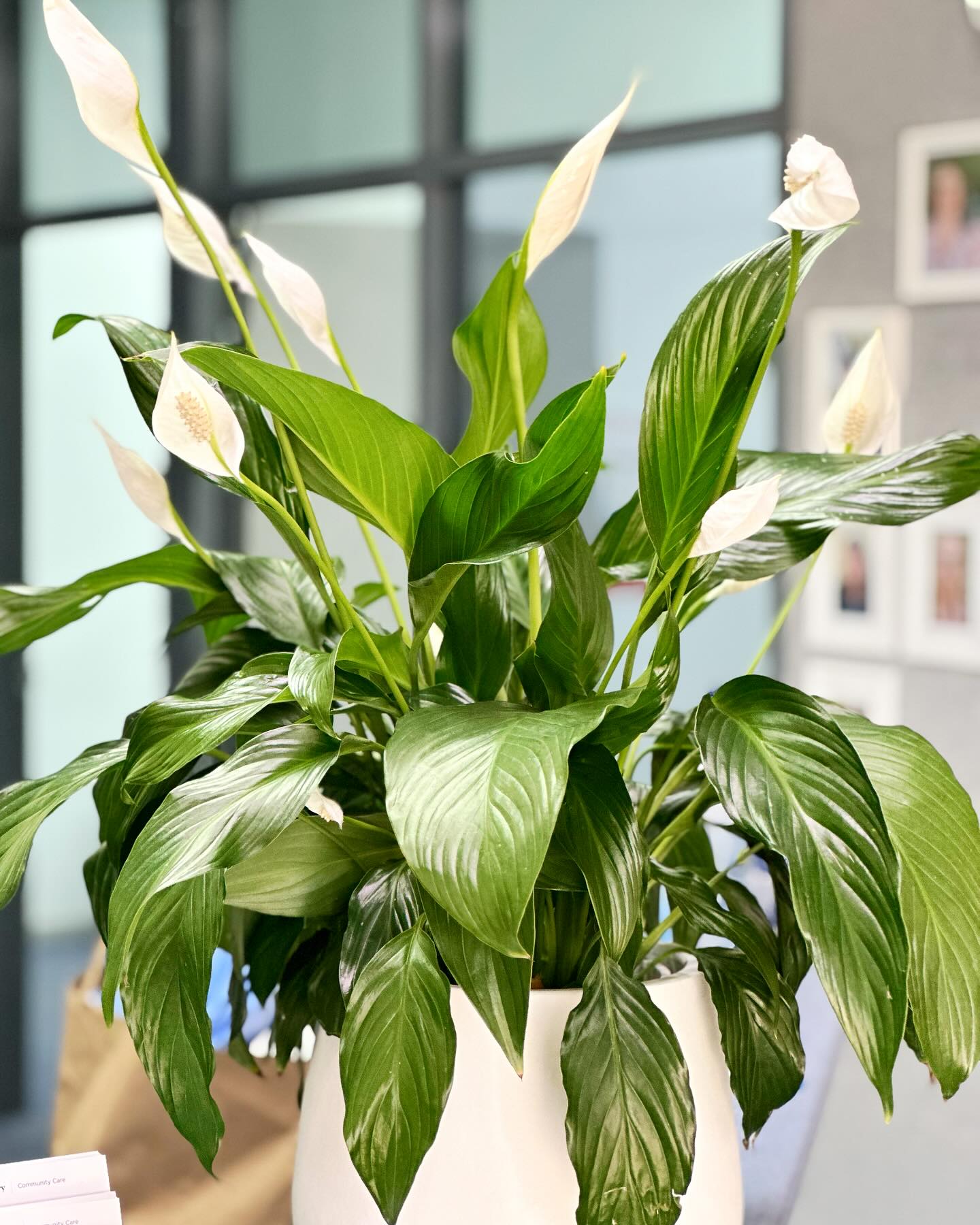
- Why It’s Great: Glossy, dark green leaves and elegant white flowers.
- Light: Moderate to low light. Avoid direct sunlight.
- Watering: Keep soil evenly moist. Tolerates slight drying out.
- Size: Can grow up to 3 feet tall.
- Soil: Well-draining, rich potting soil.
- Feeding: Feed every 6-8 weeks during the growing season.
- Flowering: White flowers bloom periodically.
- Ease of growing rating: Easy.
- Guzmania
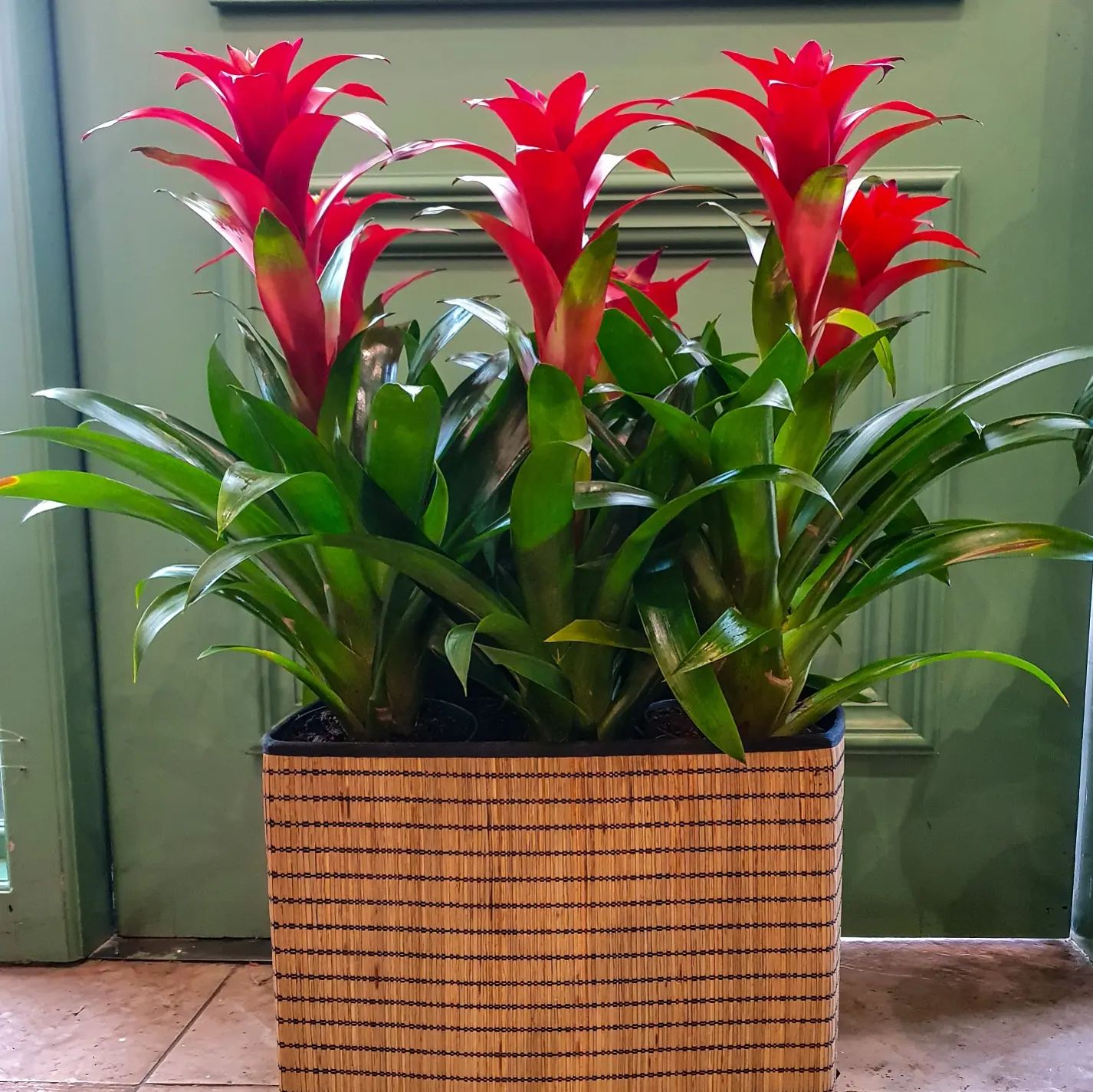
- Why It’s Great: Striking tropical plant with colorful bracts that last for months.
- Light: Bright, indirect light. Avoid direct sun.
- Watering: Keep the central cup filled with water and change it often.
- Size: Compact, usually 12-24 inches tall.
- Soil: Well-draining potting mix.
- Feeding: Fertilize with a balanced liquid fertilizer every 2-3 months.
- Flowering: Colorful bracts make a stunning display.
- Ease of growing rating: Moderate.
- Zebra Haworthia
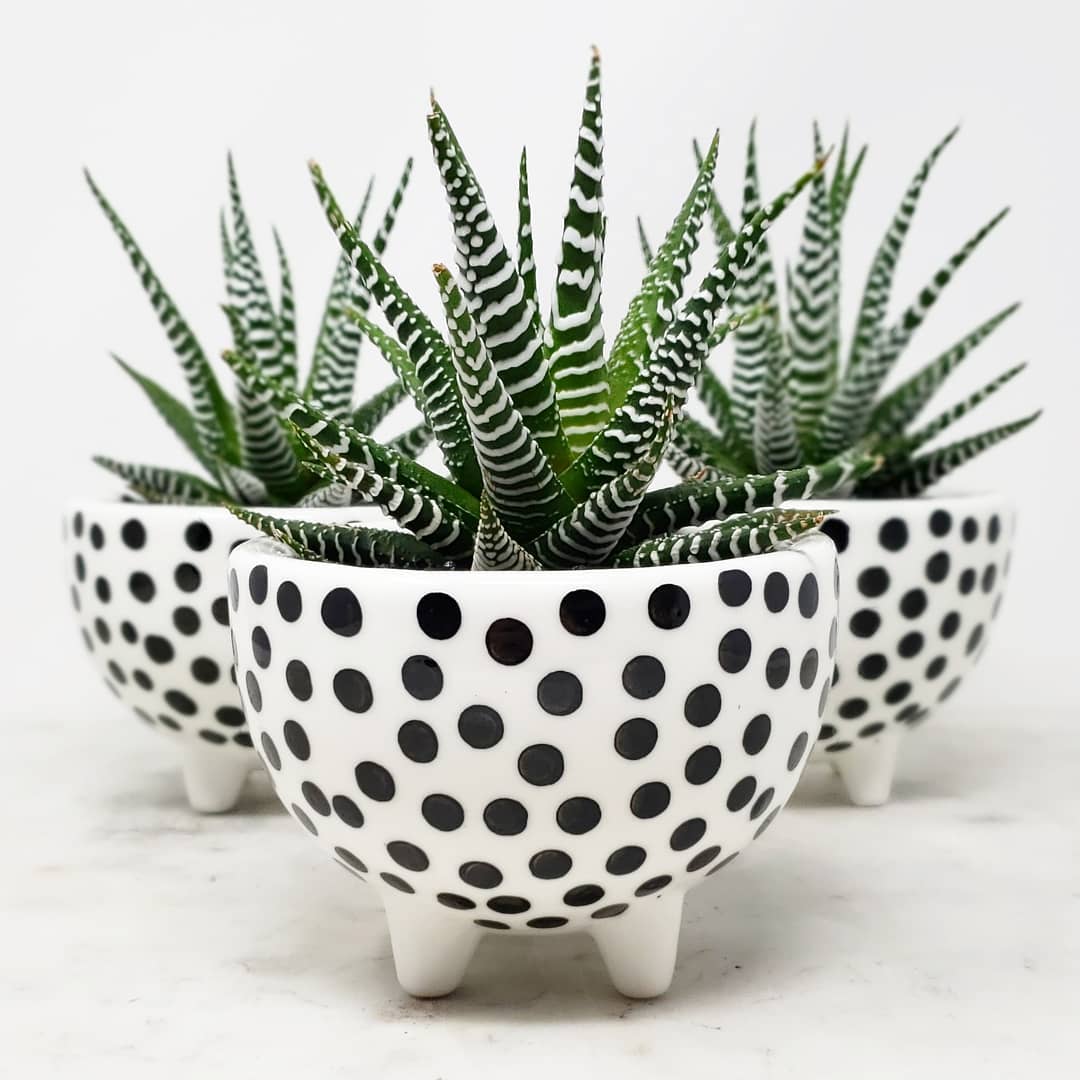
- Why It’s Great: Striking white striped foliage in a rosette shape.
- Light: Bright, indirect light. Can tolerate some direct sun.
- Watering: Allow the soil to dry out between waterings.
- Size: Compact, usually around 4-6 inches tall.
- Soil: Well-draining succulent mix.
- Feeding: Fertilize sparingly or not at all.
- Flowering: Small white flowers in summer.
- Ease of growing rating: Easy.
- Calathea
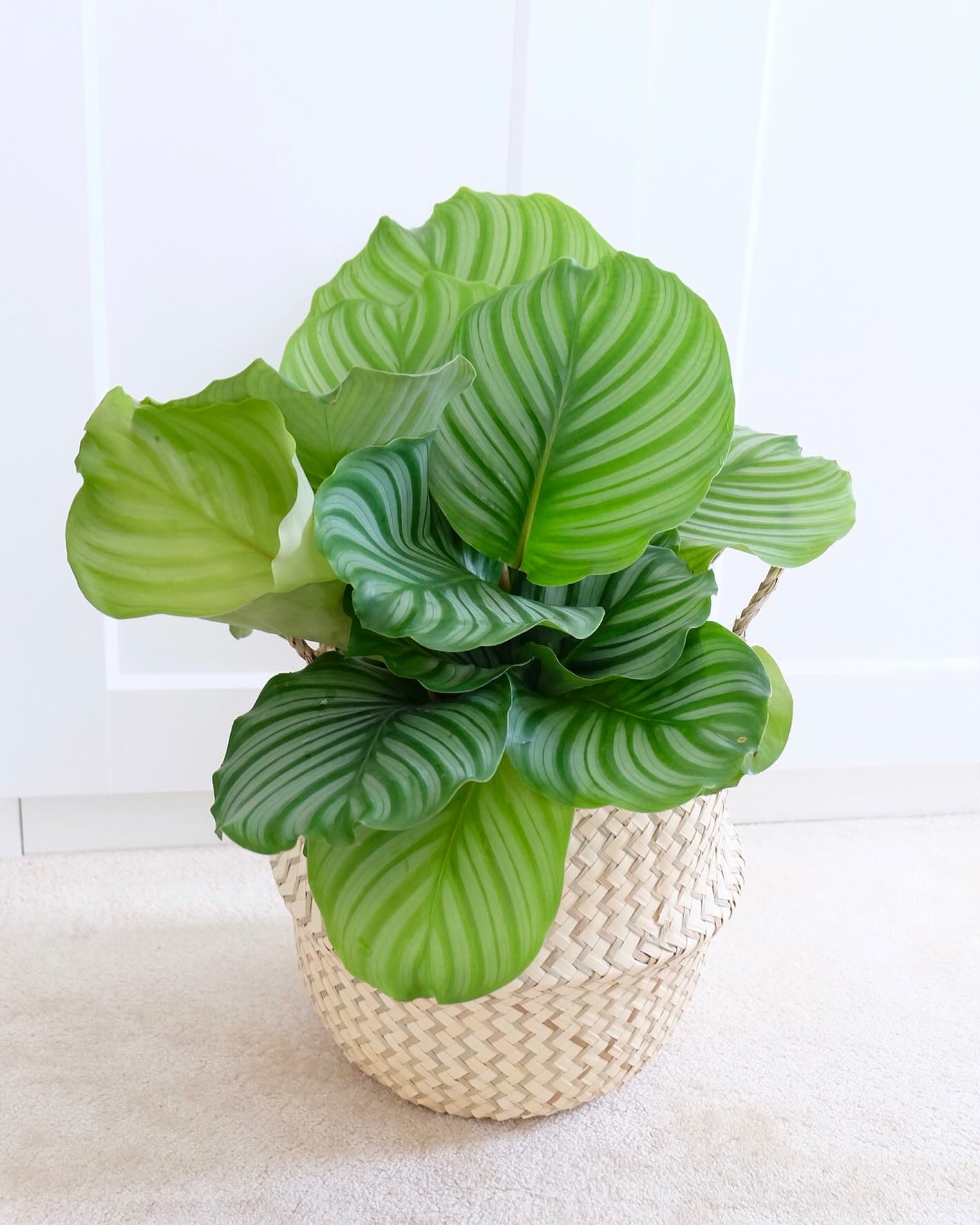
- Why It’s Great: Stunning foliage with intricate patterns and colors.
- Light: Medium to bright, indirect light. Avoid direct sun.
- Watering: Keep the soil consistently moist, but not waterlogged.
- Size: Varies by variety; typically ranges from 1-3 feet tall.
- Soil: Well-draining, peat-based potting mix.
- Feeding: Fertilize every 2-4 weeks during the growing season.
- Flowering: Small, inconspicuous flowers.
- Ease of growing rating: Moderate.
- Bird of Paradise
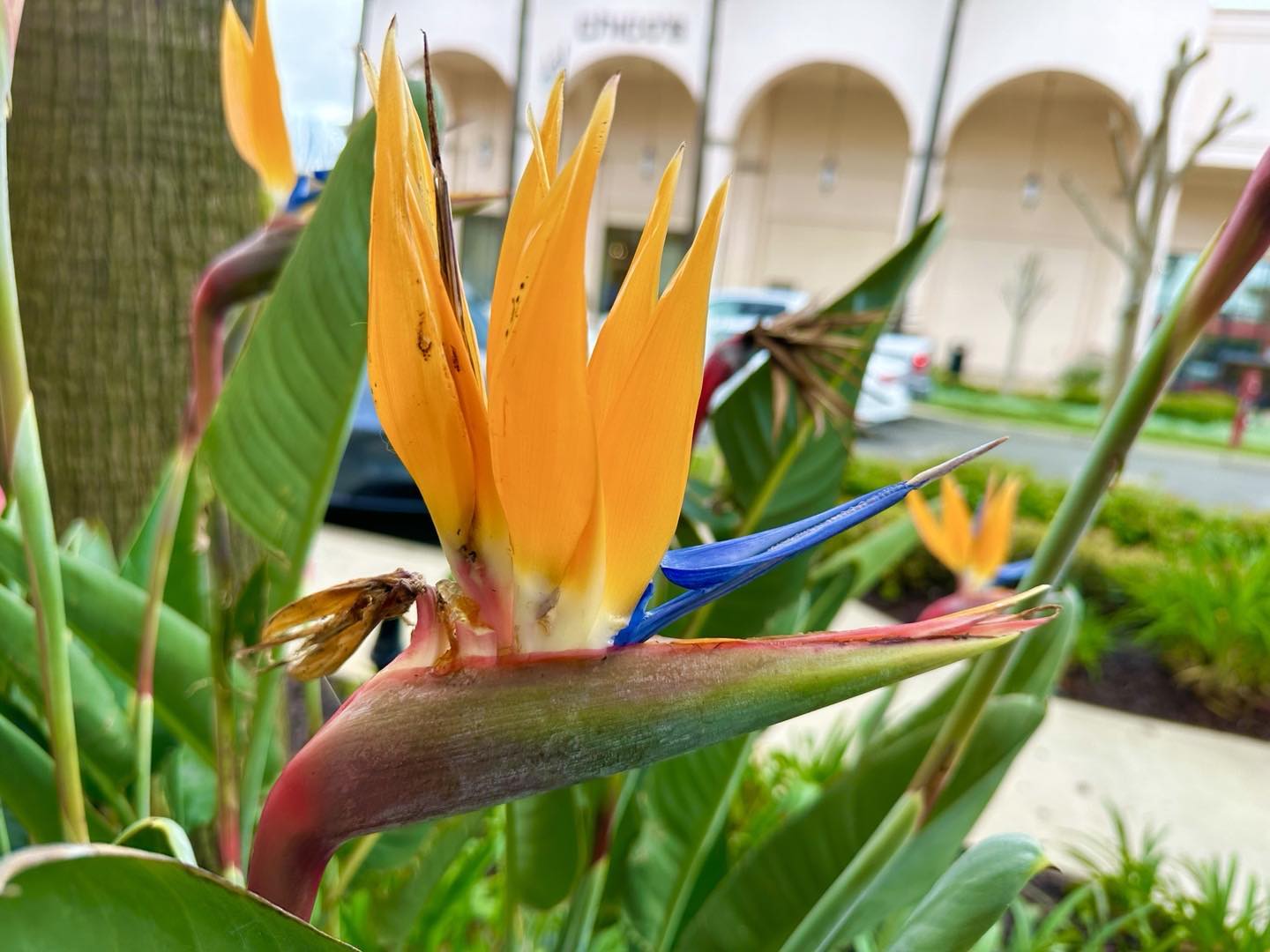
- Why It’s Great: Striking, tropical foliage reminiscent of a bird’s feathers.
- Light: Bright, indirect light. Tolerates lower light levels.
- Watering: Allow the top inch of soil to dry between waterings.
- Size: Can grow up to 5-6 feet tall indoors.
- Soil: Well-draining, fertile potting mix.
- Feeding: Fertilize every 2-4 weeks during the growing season.
- Flowering: Occasionally produces orange or yellow flower clusters.
- Ease of growing rating: Moderate.
- Tradescantia (Wandering Jew)
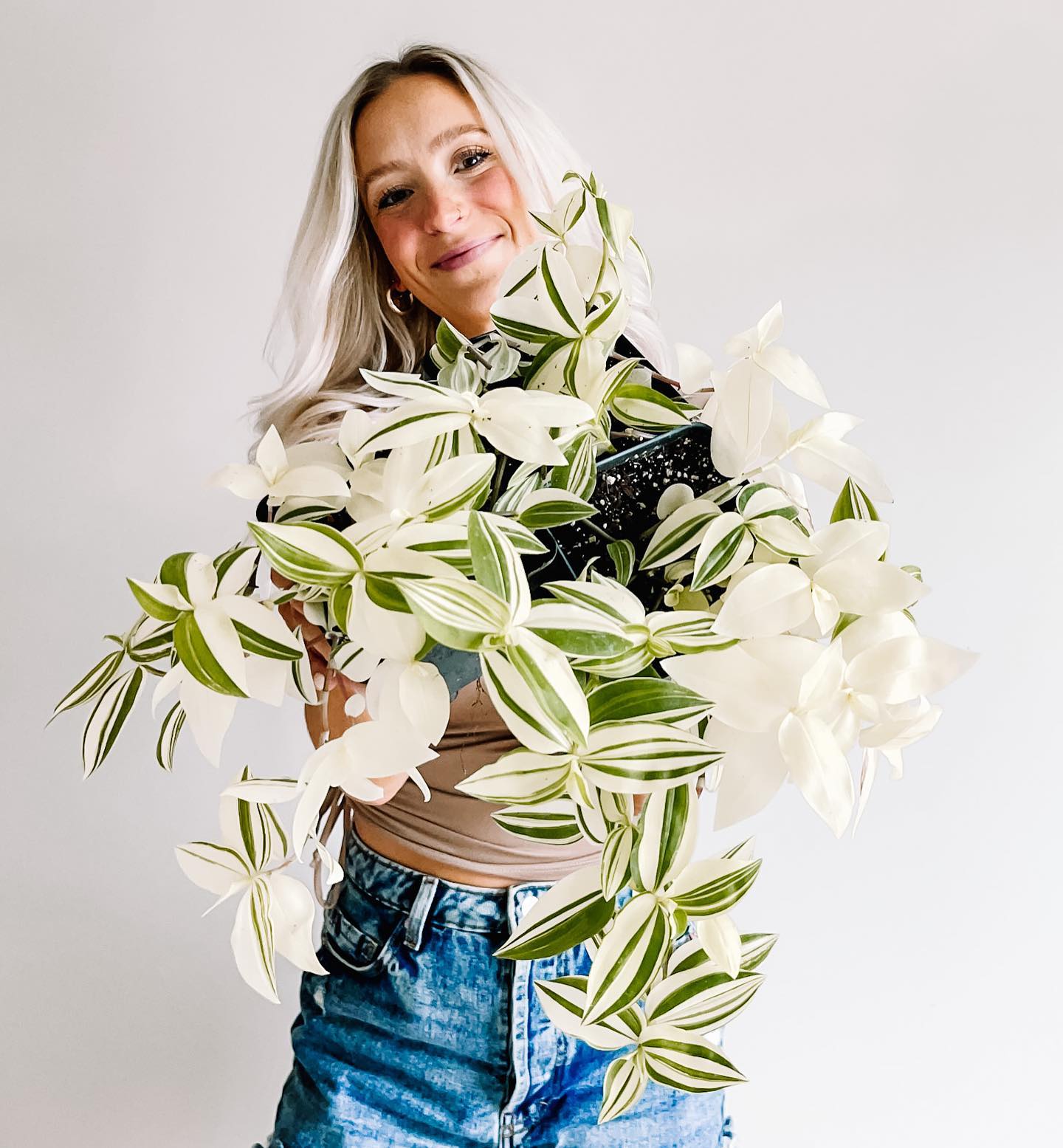
- Why It’s Great: Beautiful trailing plant with vibrant leaves in various shades of purple, green, and silver.
- Light: Bright, indirect light. Tolerates lower light levels.
- Watering: Keep soil consistently moist.
- Size: Can trail up to several feet in length.
- Soil: Well-draining potting mix.
- Feeding: Fertilize every 2-4 weeks during the growing season.
- Flowering: Small, three-petaled purple or pink flowers.
- Ease of growing rating: Easy.
- Pothos
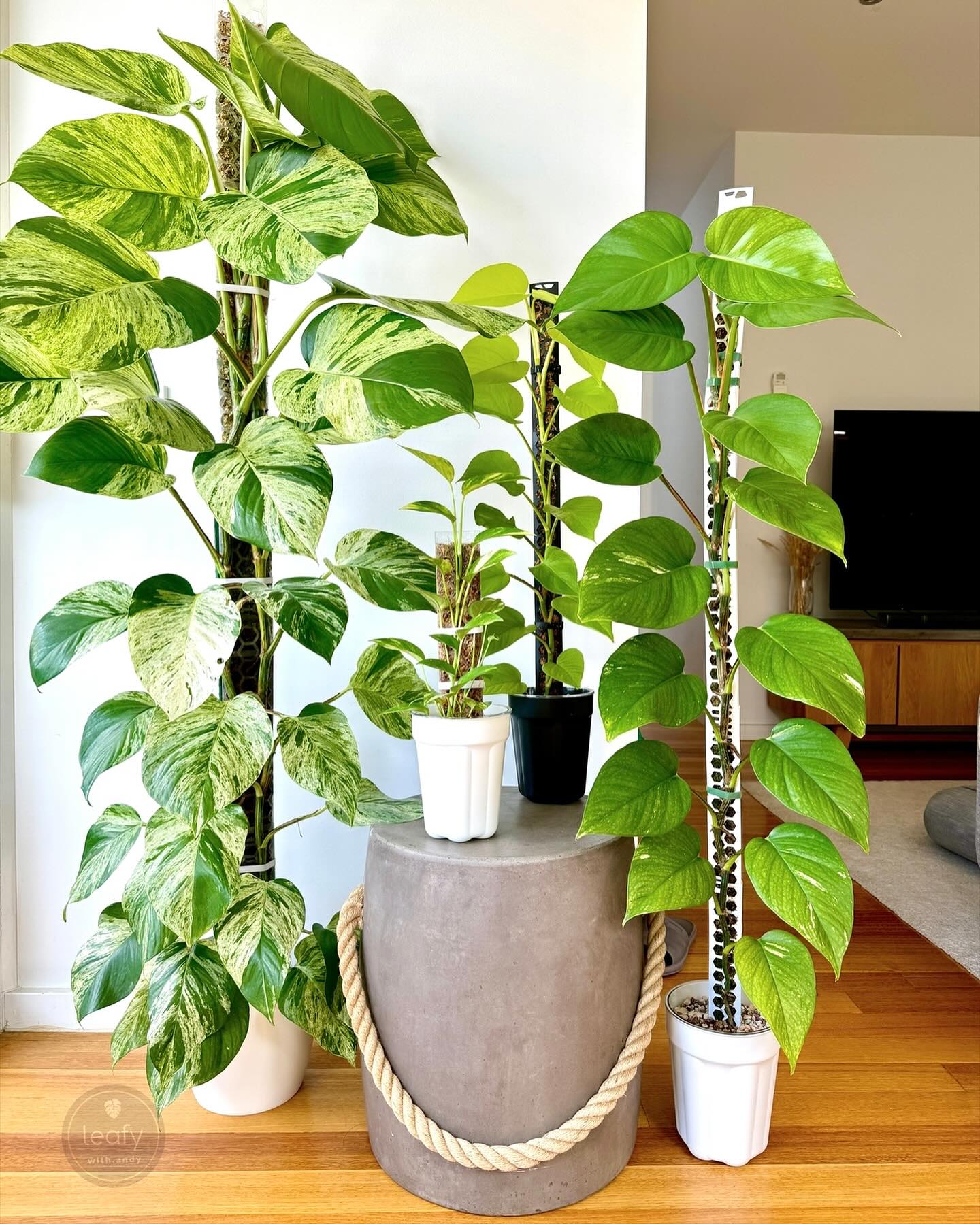
- Why It’s Great: Versatile plant with cascading vines and heart-shaped leaves in various shades of green, yellow, or white.
- Light: Low to bright, indirect light. Tolerates lower light levels.
- Watering: Allow the top inch of soil to dry between waterings.
- Size: Vines can grow several feet long.
- Soil: Well-draining potting mix.
- Feeding: Fertilize every 4-6 weeks during the growing season.
- Flowering: Rarely flowers indoors.
- Ease of growing rating: Easy.
- Anthurium
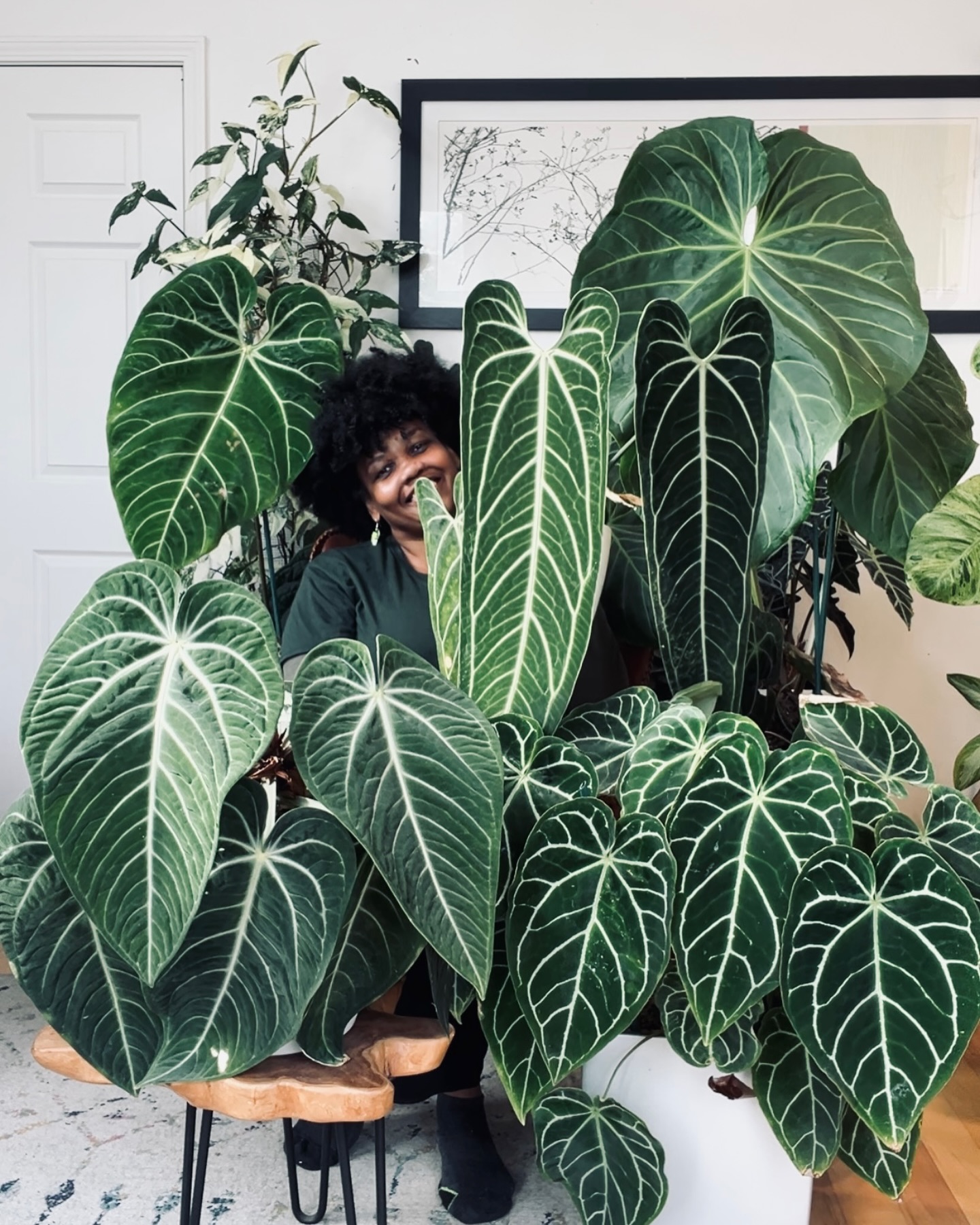
- Why It’s Great: Exotic, heart-shaped flowers in vibrant shades of red, pink, or white.
- Light: Bright, indirect light. Avoid direct sun.
- Watering: Allow the top inch of soil to dry between waterings.
- Size: Varies; most reach around 1-2 feet tall.
- Soil: Well-draining potting mix.
- Feeding: Fertilize every 2-4 weeks during the growing season.
- Flowering: Continuous blooming period.
- Ease of growing rating: Moderate.
- Ficus lyrata (Fiddle Leaf Fig)
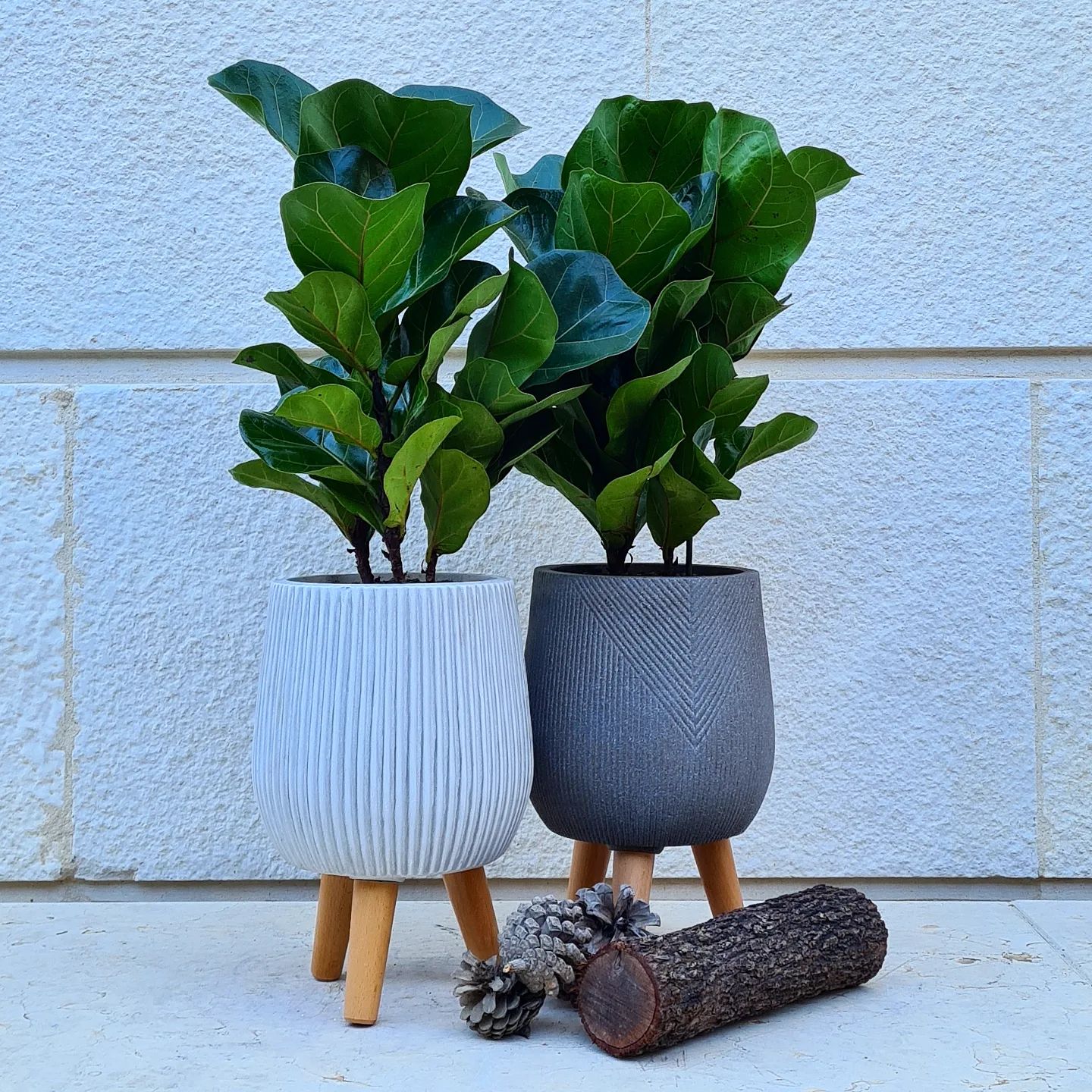
- Why It’s Great: Striking, large, fiddle-shaped leaves create a dramatic focal point.
- Light: Bright, indirect light. Tolerates lower light levels.
- Watering: Allow the top inch of soil to dry between waterings.
- Size: Can reach heights up to 6-10 feet indoors.
- Soil: Well-draining potting mix.
- Feeding: Fertilize every 2-4 weeks during the growing season.
- Flowering: Rarely flowers indoors.
- Ease of growing rating: Moderate.
- Rex Begonia
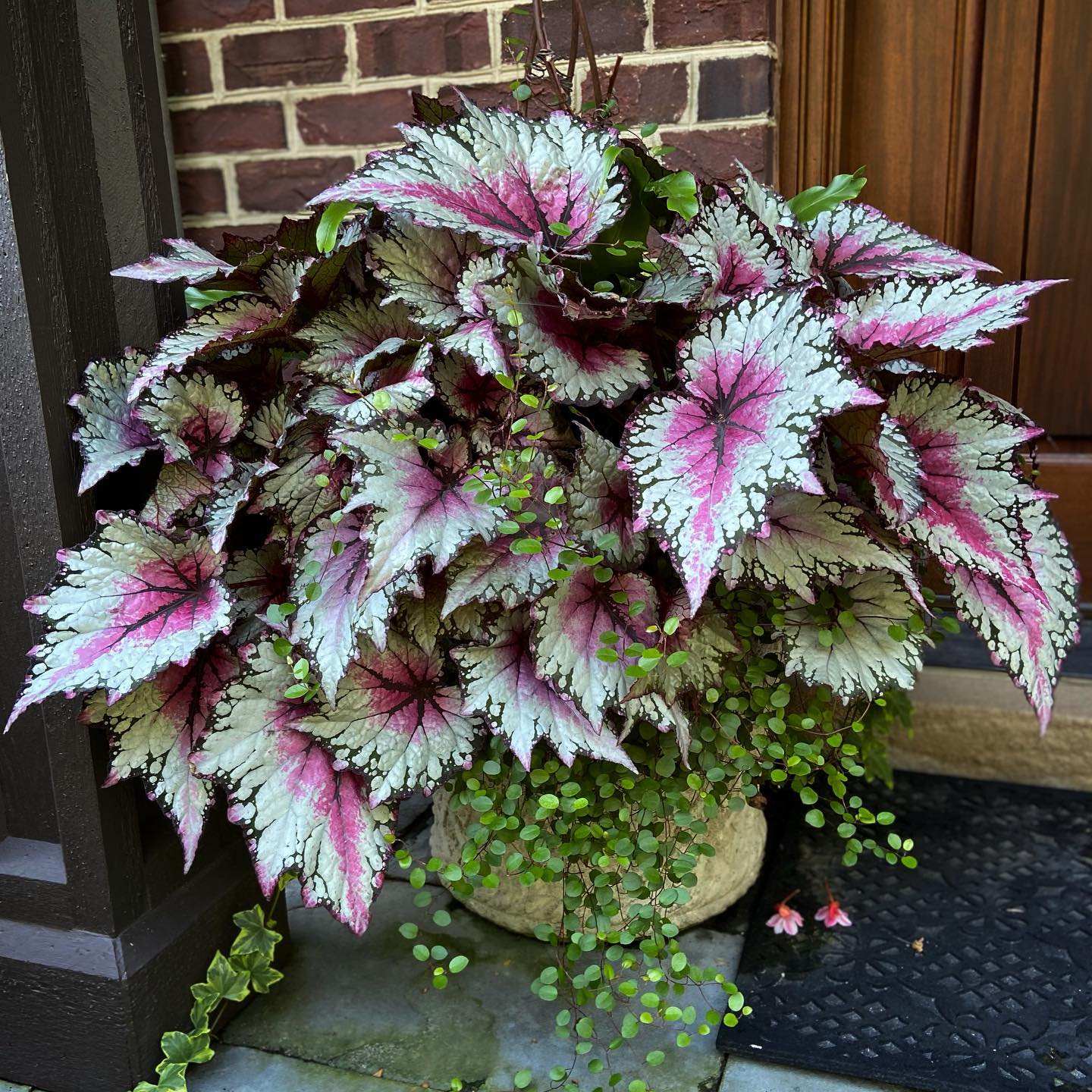
- Why It’s Great: Vibrant, colorful foliage in various patterns and shades.
- Light: Medium to bright, indirect light. Protect from direct sun.
- Watering: Keep soil consistently moist; avoid overwatering.
- Size: Compact, around 6-12 inches tall.
- Soil: Well-draining potting mix.
- Feeding: Fertilize every 2-4 weeks during the growing season.
- Flowering: Clusters of pink, white, or red flowers.
- Ease of growing rating: Moderate.
- Spider Plant
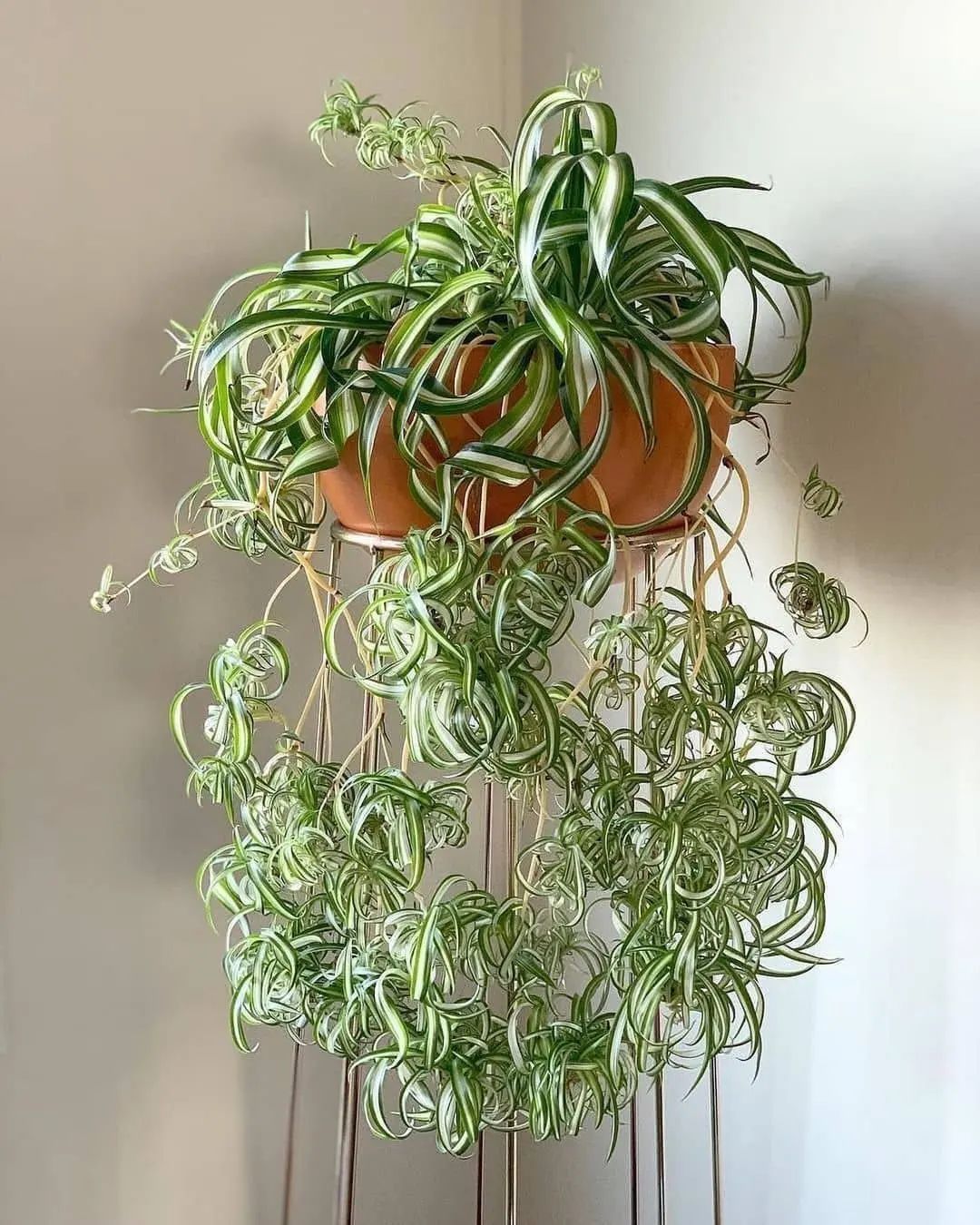
- Why It’s Great: Easy-to-grow plant with arching green and white striped leaves.
- Light: Bright, indirect light. Tolerates lower light levels.
- Watering: Keep soil evenly moist. Tolerates some drying out.
- Size: Can reach several feet in length when mature.
- Soil: Well-draining potting mix.
- Feeding: Fertilize every 2-4 weeks during the growing season.
- Flowering: Produces small white flowers and baby spider plantlets.
- Ease of growing rating: Easy.
- Peperomia
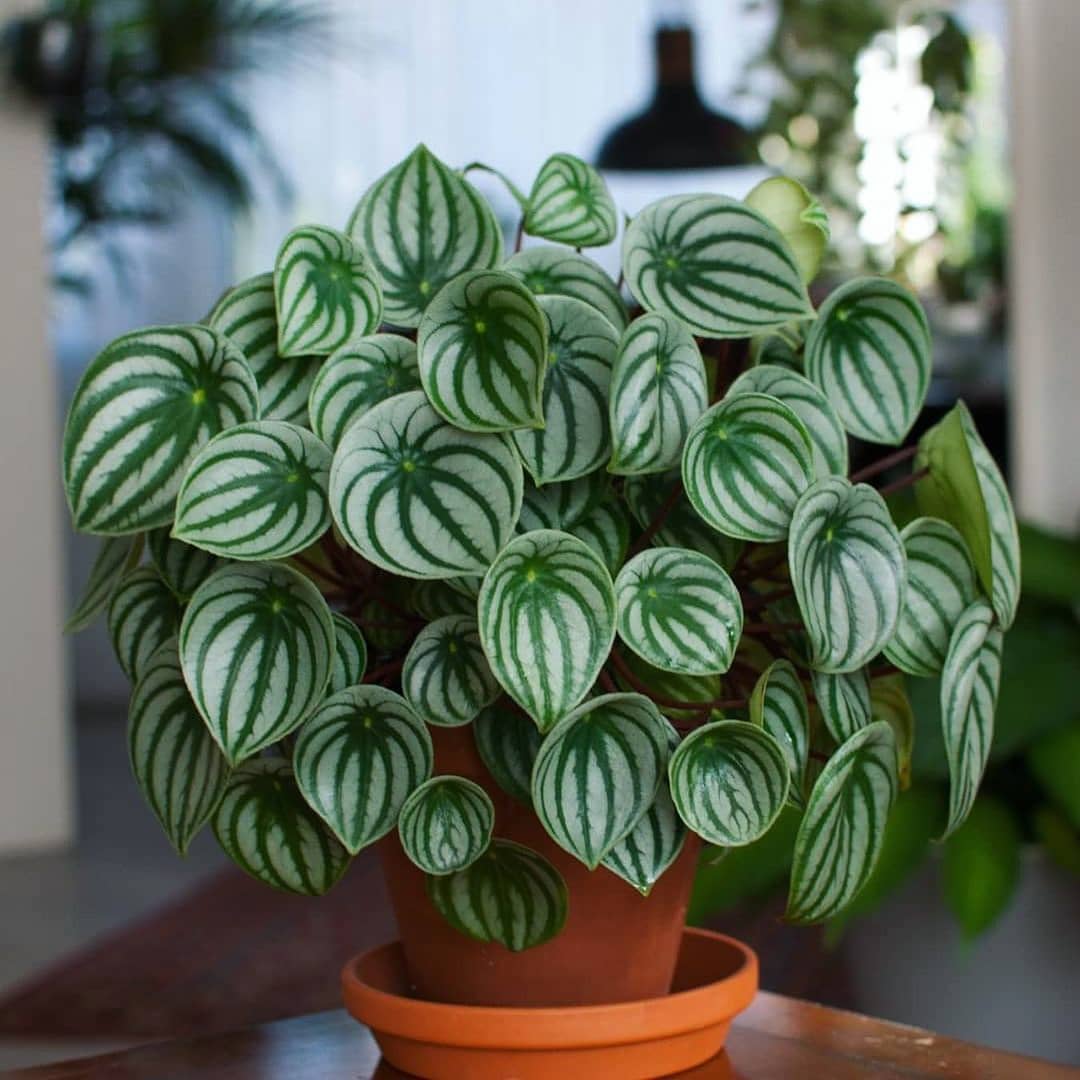
- Why It’s Great: Compact, low-maintenance plant with thick, fleshy leaves in various shapes and colors.
- Light: Medium to bright, indirect light. Tolerates lower light levels.
- Watering: Allow the top inch of soil to dry between waterings.
- Size: Compact, usually around 6-8 inches tall.
- Soil: Well-draining potting mix.
- Feeding: Fertilize every 2-4 weeks during the growing season.
- Flowering: Some varieties produce small, inconspicuous flowers.
- Ease of growing rating: Easy.
- Begonia
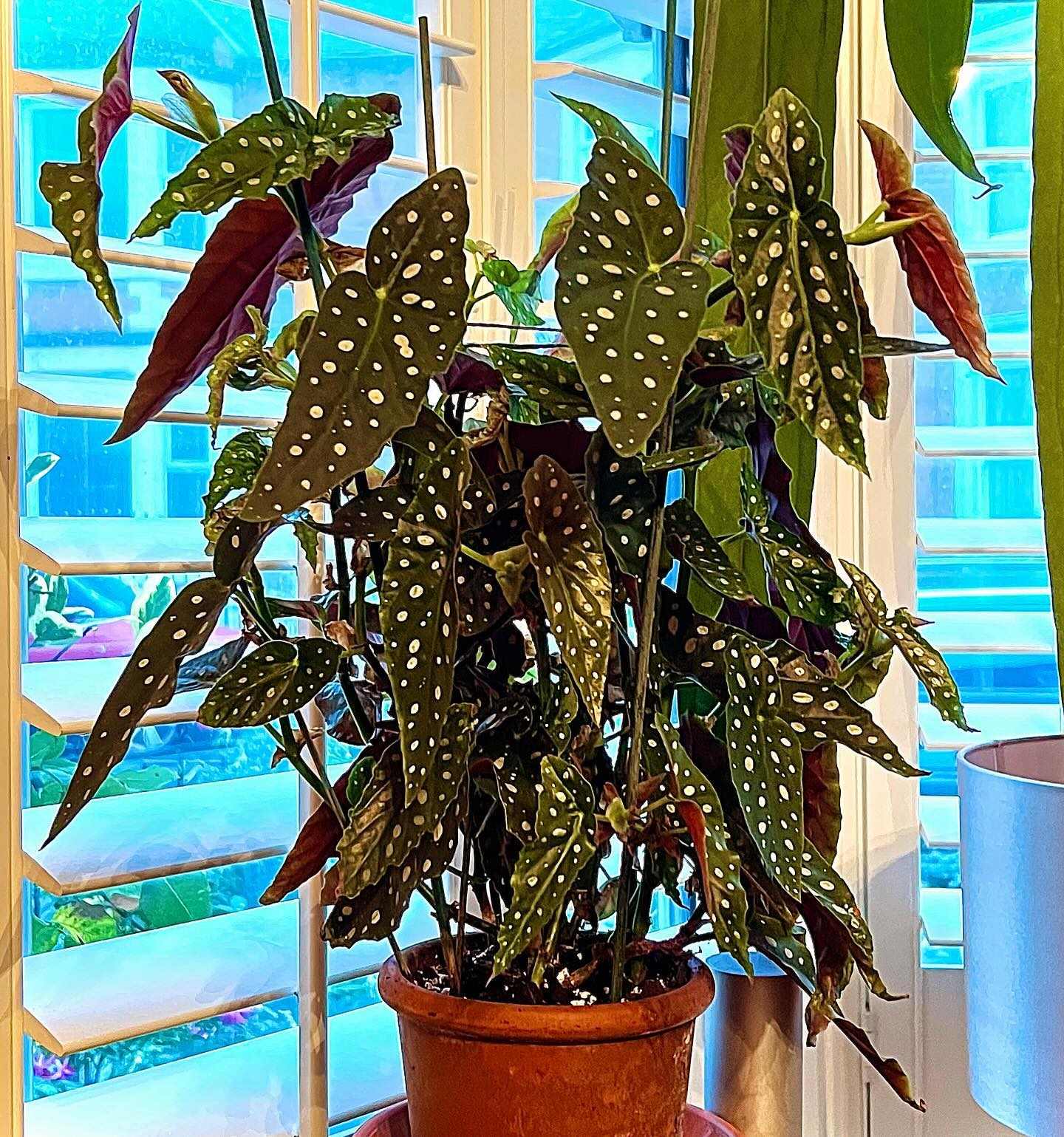
- Why It’s Great: Wide range of colorful flowers and foliage in various shapes and sizes.
- Light: Medium to bright, indirect light. Avoid direct sun.
- Watering: Keep soil consistently moist; avoid overwatering.
- Size: Varies by variety; can range from compact to several feet tall.
- Soil: Well-draining potting mix.
- Feeding: Fertilize monthly during the growing season.
- Flowering: Showy flowers in various colors.
- Ease of growing rating: Moderate.
- Dieffenbachia
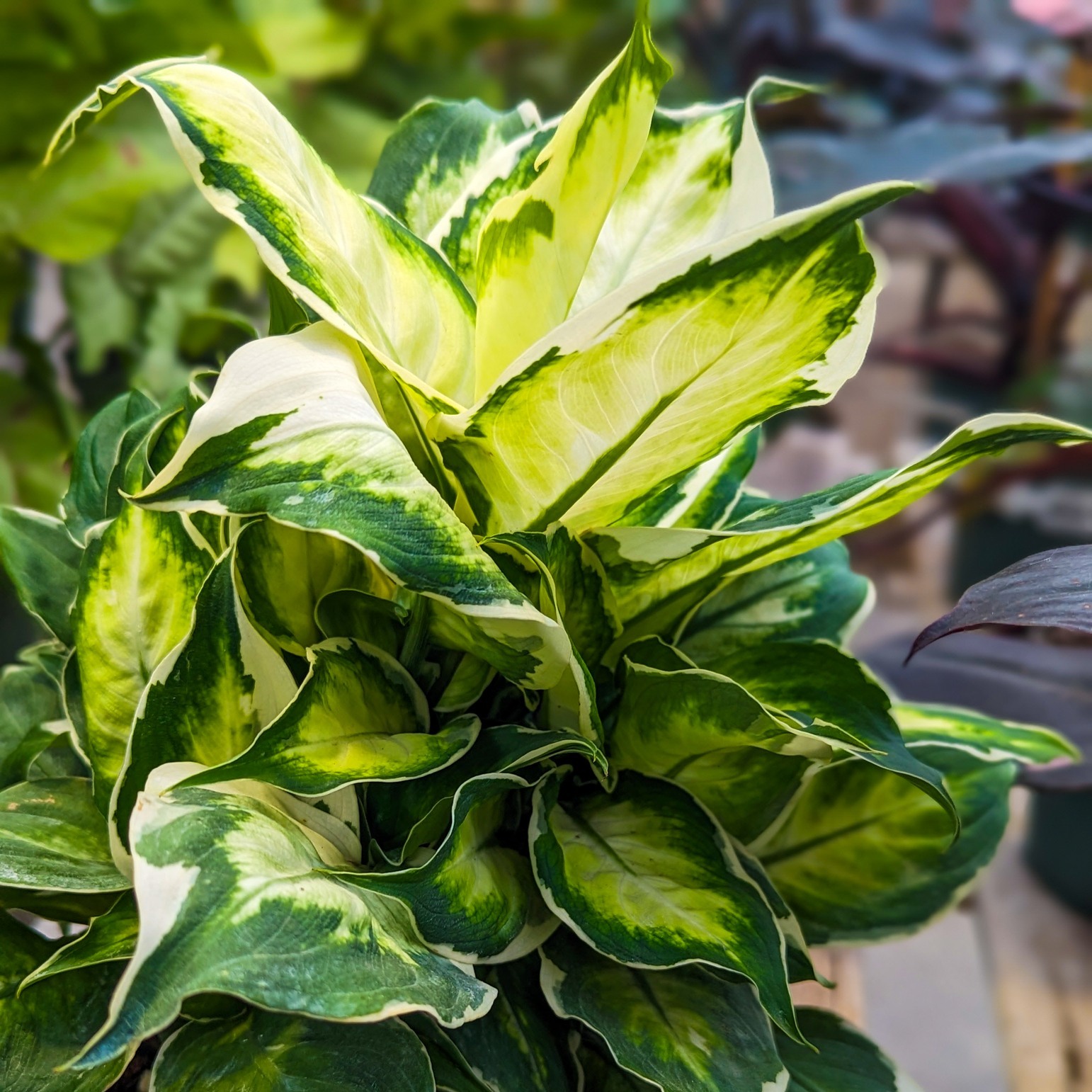
- Why It’s Great: Large, tropical leaves in shades of green, yellow, and white.
- Light: Medium to bright, indirect light. Tolerates lower light levels.
- Watering: Allow the top inch of soil to dry between waterings.
- Size: Can reach heights of 2-6 feet.
- Soil: Well-draining potting mix.
- Feeding: Fertilize every 4-6 weeks during the growing season.
- Flowering: Rarely flowers indoors.
- Ease of growing rating: Easy.
- Nerve Plant (Fittonia)
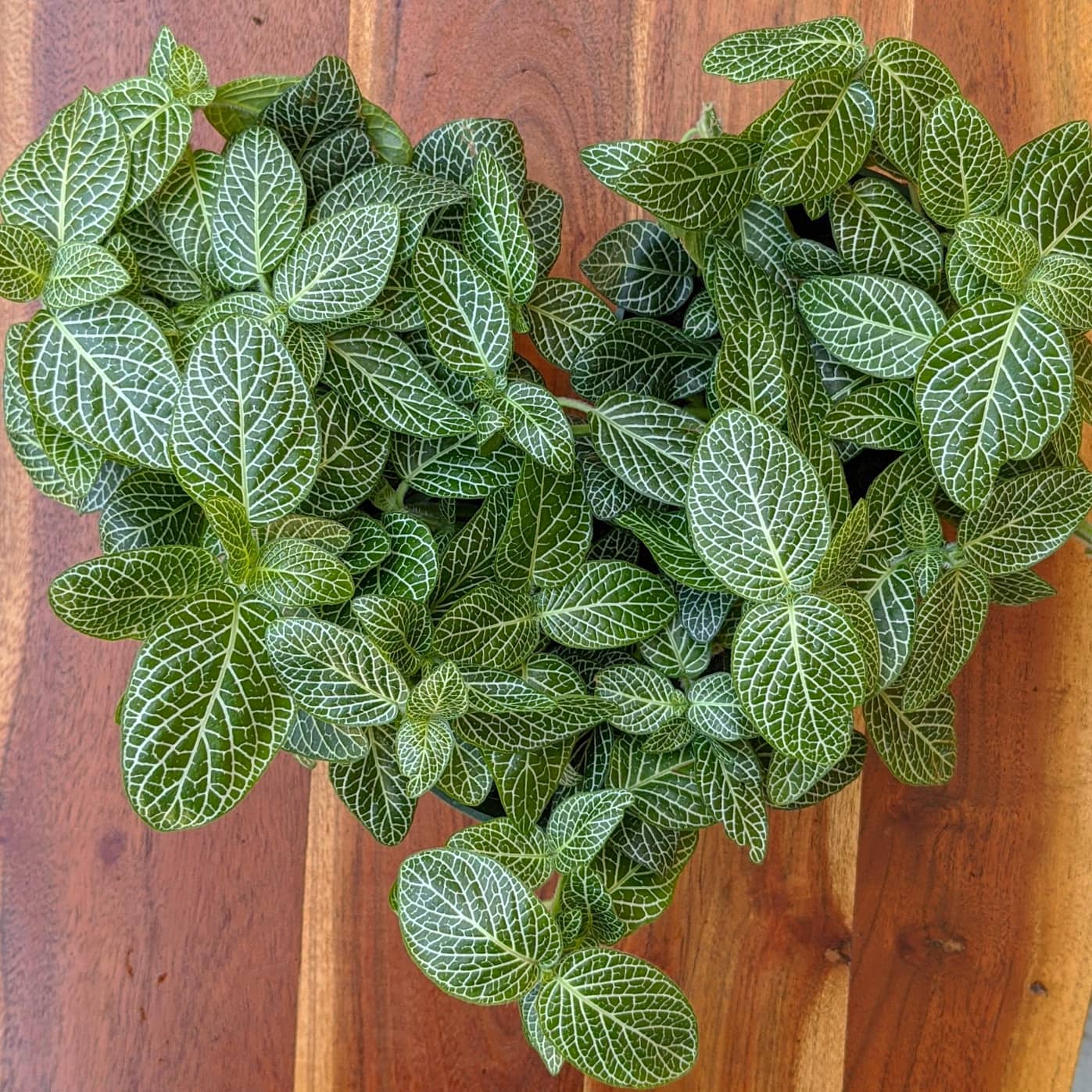
- Why It’s Great: Delicate, beautifully patterned foliage in shades of pink, red, or white.
- Light: Medium to bright, indirect light. Protect from direct sun.
- Watering: Keep soil consistently moist, but not waterlogged.
- Size: Compact, around 6-12 inches tall.
- Soil: Well-draining potting mix.
- Feeding: Fertilize monthly during the growing season.
- Flowering: Small, insignificant white flowers.
- Ease of growing rating: Easy.
- Parlor Palm
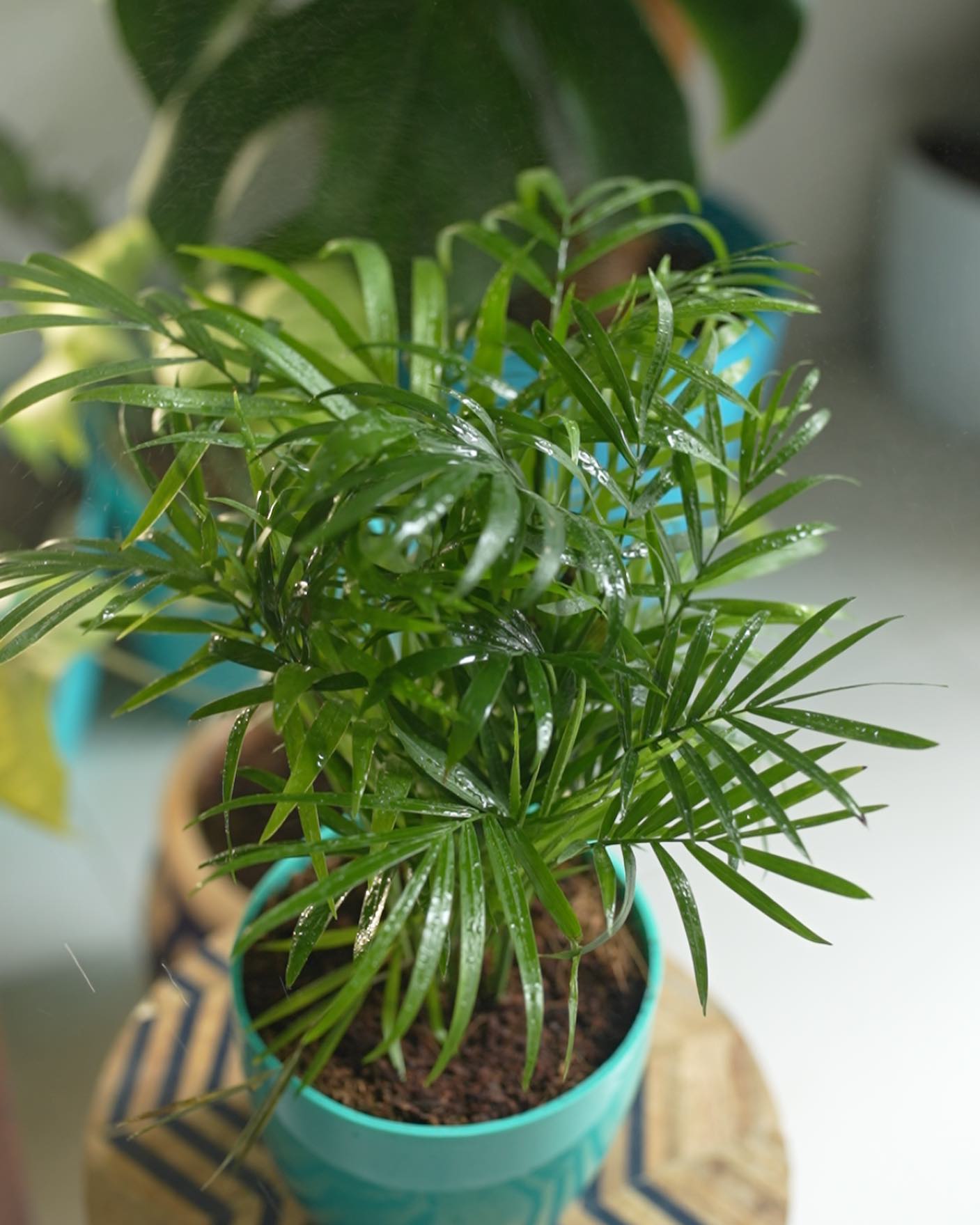
- Why It’s Great: Graceful, feathery fronds add a tropical touch to any room.
- Light: Low to bright, indirect light. Tolerates lower light levels.
- Watering: Allow the top inch of soil to dry between waterings.
- Size: Can reach heights of 2-6 feet.
- Soil: Well-draining potting mix.
- Feeding: Fertilize every 2-4 weeks during the growing season.
- Flowering: Rarely flowers indoors.
- Ease of growing rating: Easy.
- Tradescantia Zebrina (Wandering Jew)
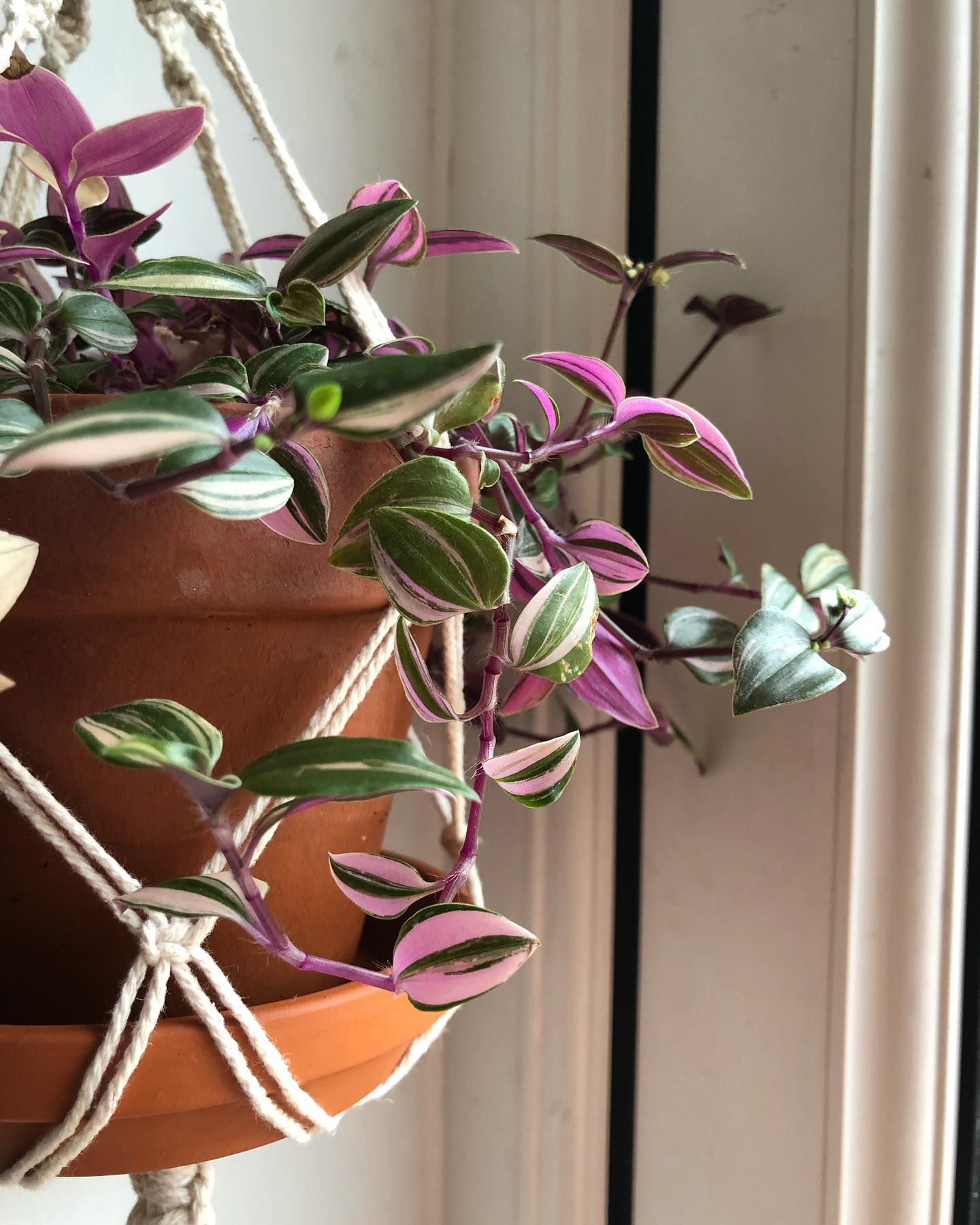
- Why It’s Great: Striking purple and silver striped foliage cascades down from hanging baskets or climbs up stakes.
- Light: Bright, indirect light. Tolerates lower light levels.
- Watering: Keep soil consistently moist.
- Size: Trailing vines can reach several feet in length.
- Soil: Well-draining potting mix.
- Feeding: Fertilize every 2-4 weeks during the growing season.
- Flowering: Small, three-petaled purple or pink flowers.
- Ease of growing rating: Easy.
- Chinese Evergreen
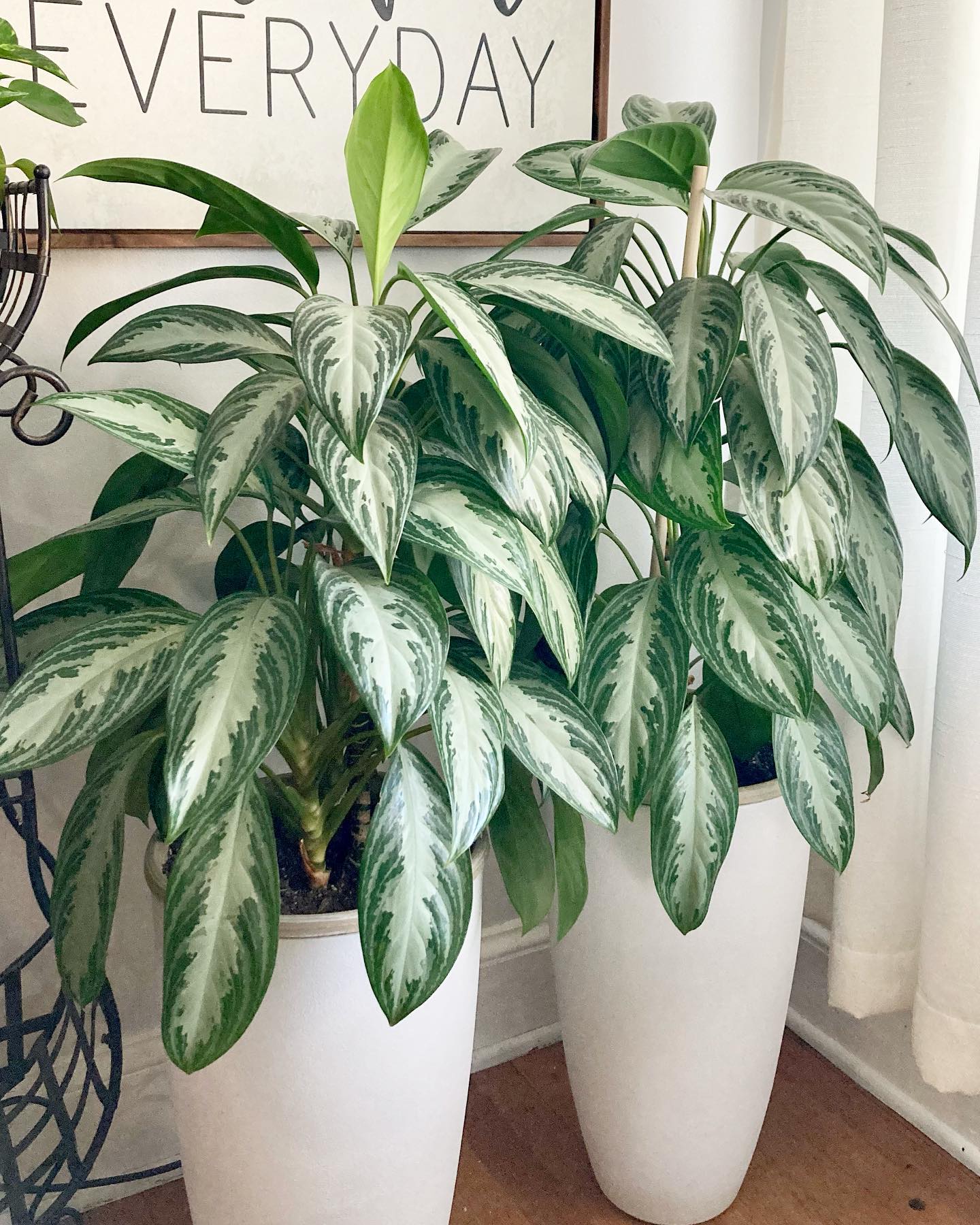
- Why It’s Great: Variegated leaves in shades of green, silver, and pink add a tropical touch to any space.
- Light: Low to bright, indirect light. Tolerates lower light levels.
- Watering: Allow the top inch of soil to dry between waterings.
- Size: Can reach heights of 2-3 feet.
- Soil: Well-draining potting mix.
- Feeding: Fertilize every 2-4 weeks during the growing season.
- Flowering: Rarely flowers indoors.
- Ease of growing rating: Easy.
- Caladium
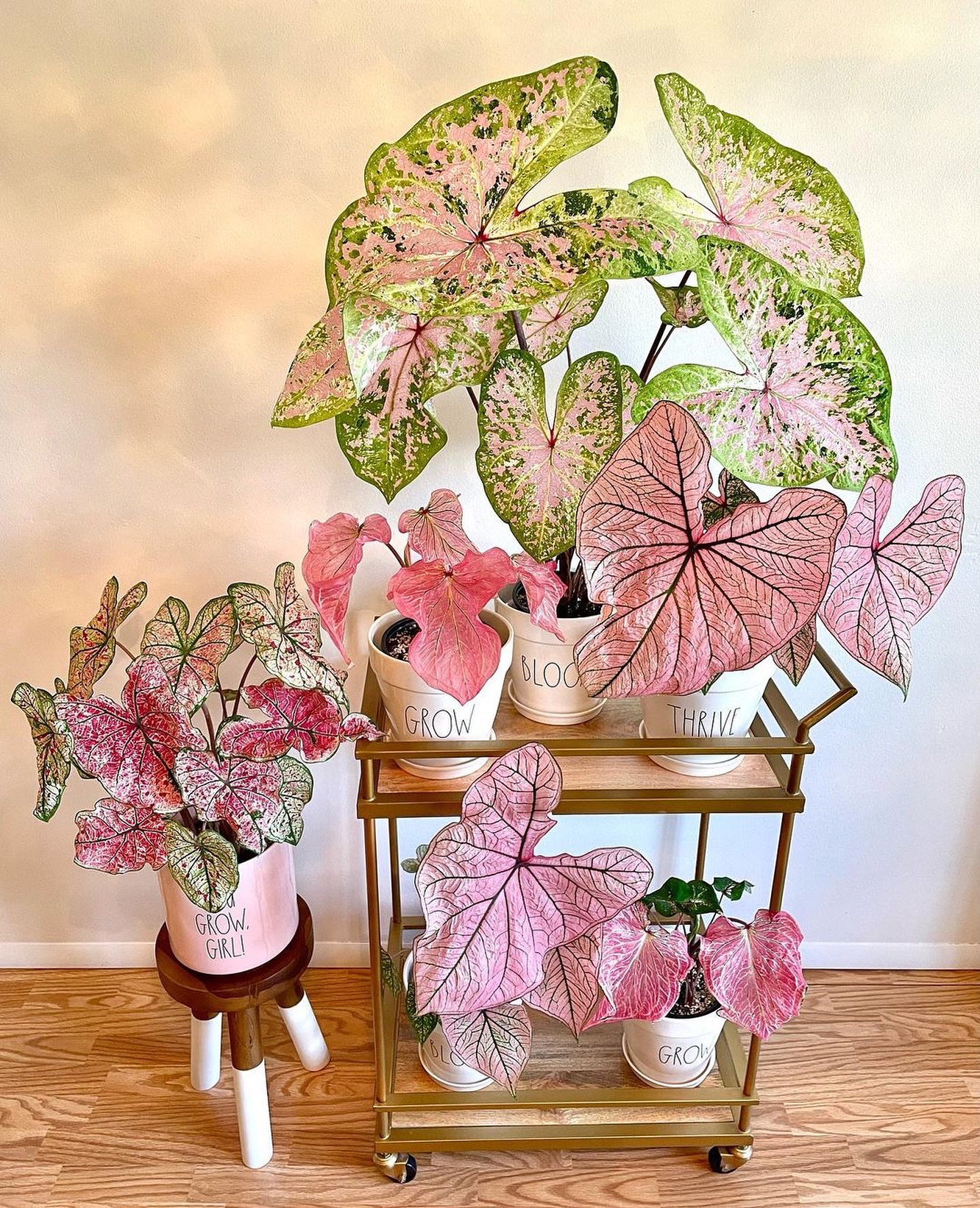
- Why It’s Great: Colorful heart-shaped leaves in shades of pink, red, white, and green.
- Light: Medium to bright, indirect light. Avoid direct sun.
- Watering: Keep soil consistently moist, but not waterlogged.
- Size: Compact, around 12-18 inches tall.
- Soil: Well-draining potting mix.
- Feeding: Fertilize every 2-4 weeks during the growing season.
- Flowering: Rarely flowers indoors.
- Ease of growing rating: Moderate.
- Phalaenopsis Orchid
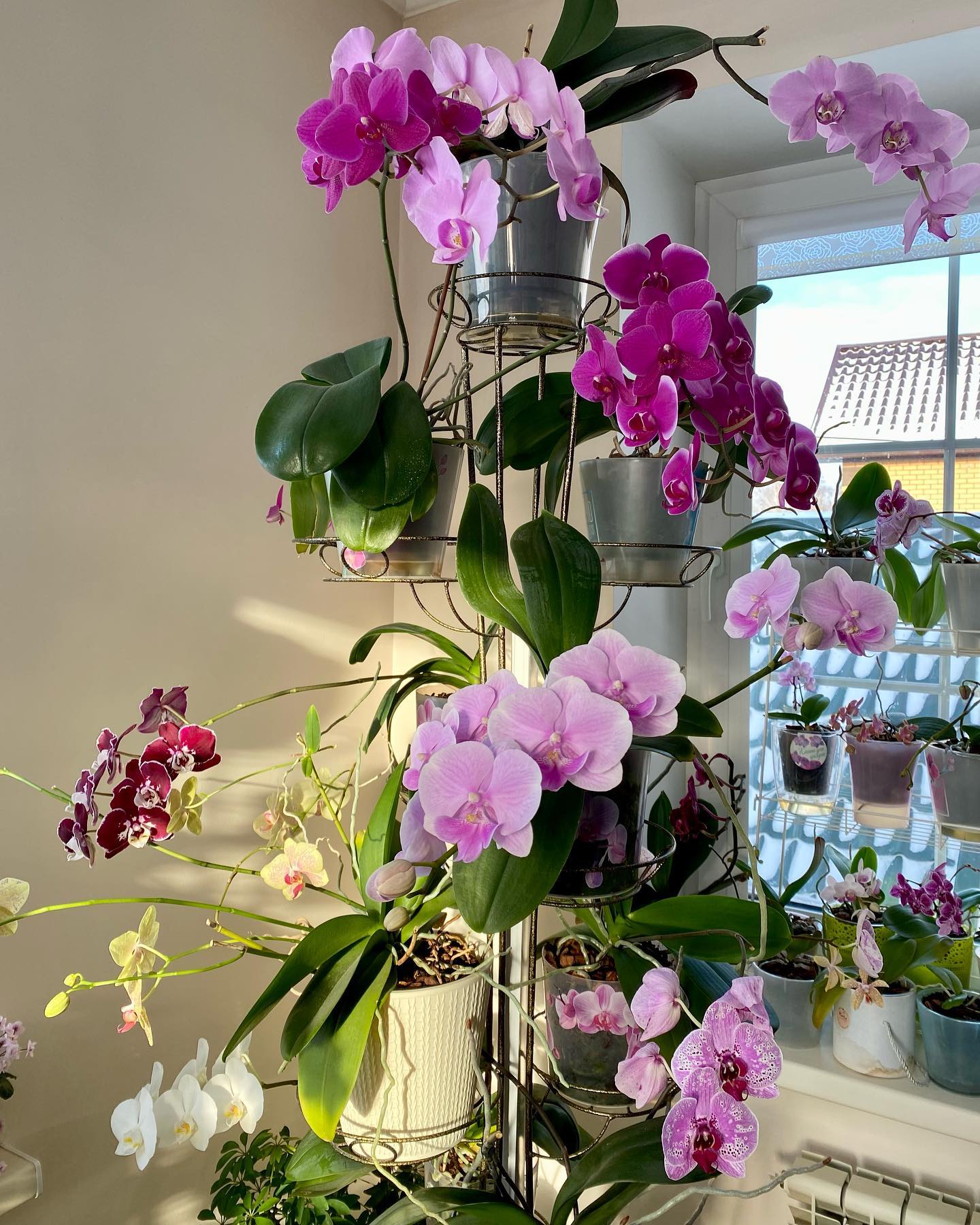
- Why It’s Great: Elegant and long-lasting flowers in various colors.
- Light: Bright, indirect light. Avoid direct sun.
- Watering: Allow the top inch of soil to dry between waterings. Water orchid with ice cubes.
- Size: Varies; typically reaches 1-3 feet tall.
- Soil: Well-draining orchid mix or bark.
- Feeding: Fertilize with orchid-specific fertilizer every 2-4 weeks during the growing season.
- Flowering: Blooms can last several weeks or months.
- Ease of growing rating: Moderate.
- Polka Dot Plant (Hypoestes phyllostachya)
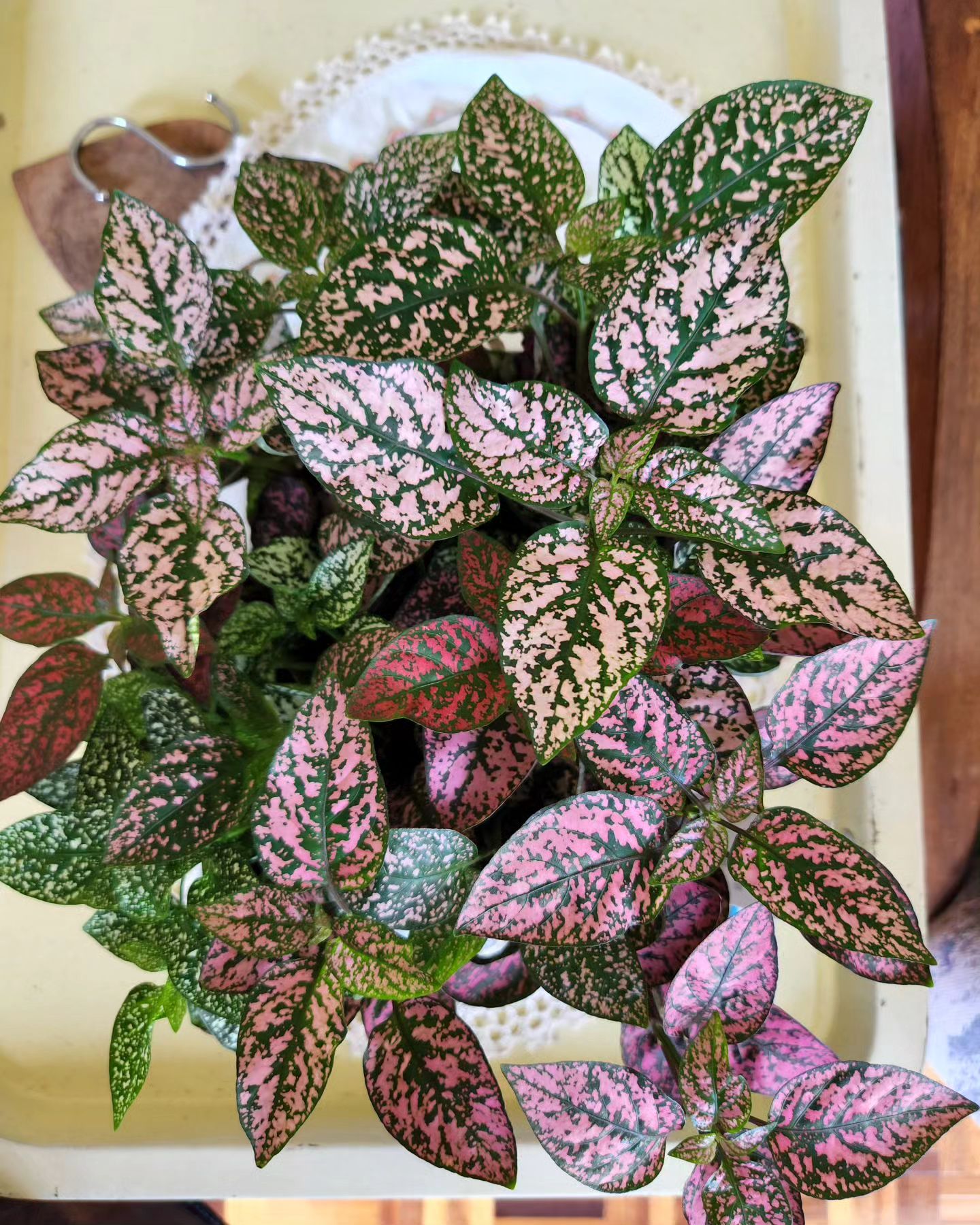
- Why It’s Great: Vibrant, polka-dotted leaves in shades of pink, red, or white.
- Light: Medium to bright, indirect light. Protect from direct sun.
- Watering: Keep soil consistently moist, but not waterlogged.
- Size: Compact, around 6-12 inches tall.
- Soil: Well-draining potting mix.
- Feeding: Fertilize monthly during the growing season.
- Flowering: Insignificant white or pink flowers.
- Ease of growing rating: Easy.
- Lipstick Plant
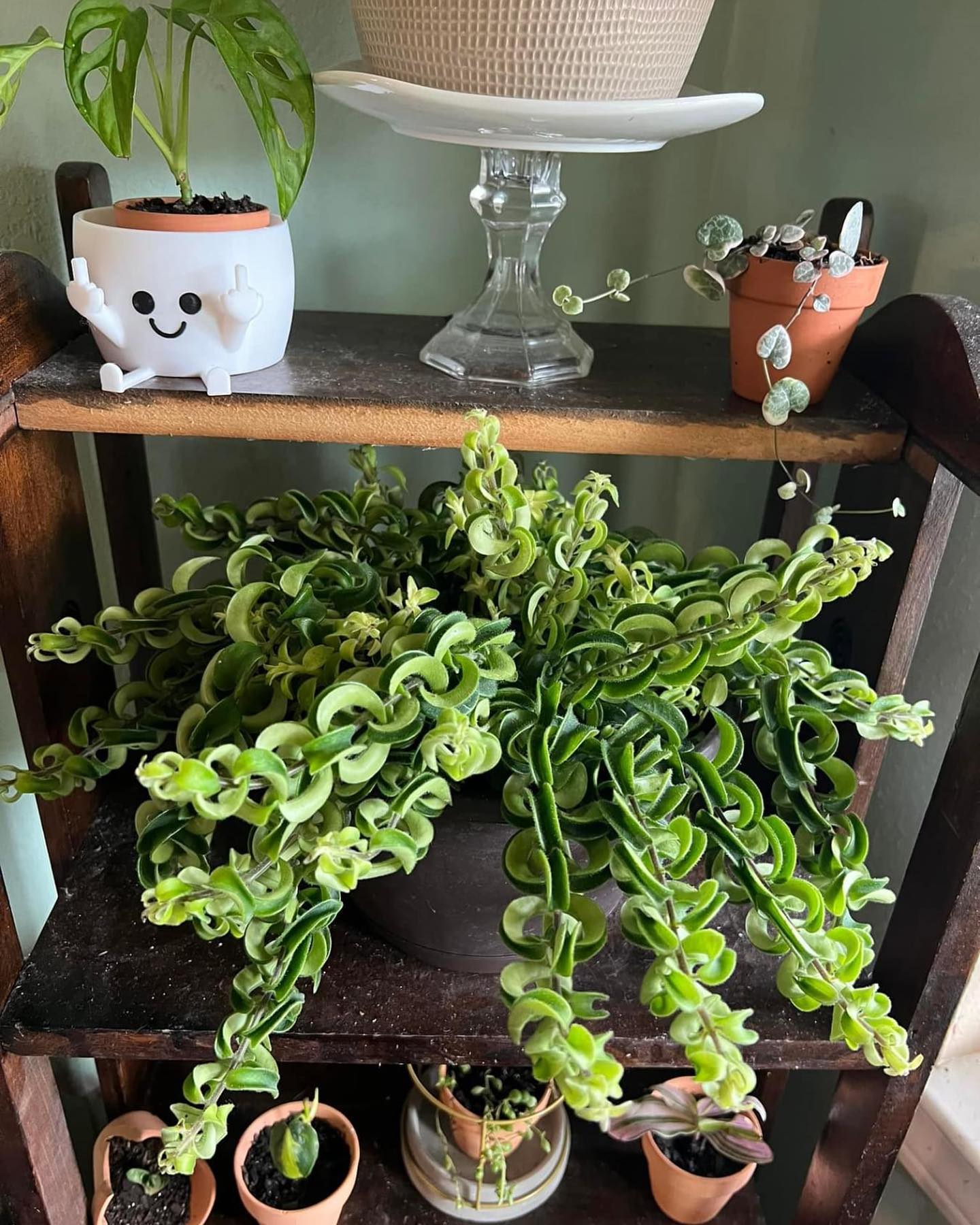
- Why It’s Great: Unique, tubular red flowers and glossy foliage.
- Light: Bright, indirect light. Protect from intense afternoon sun.
- Watering: Keep soil evenly moist during the growing season, slightly drier in winter.
- Size: Compact, around 12-24 inches tall.
- Soil: Well-draining potting mix.
- Feeding: Fertilize every 2-4 weeks during the growing season.
- Flowering: Red flowers appear in clusters.
- Ease of growing rating: Moderate.
- Kalanchoe
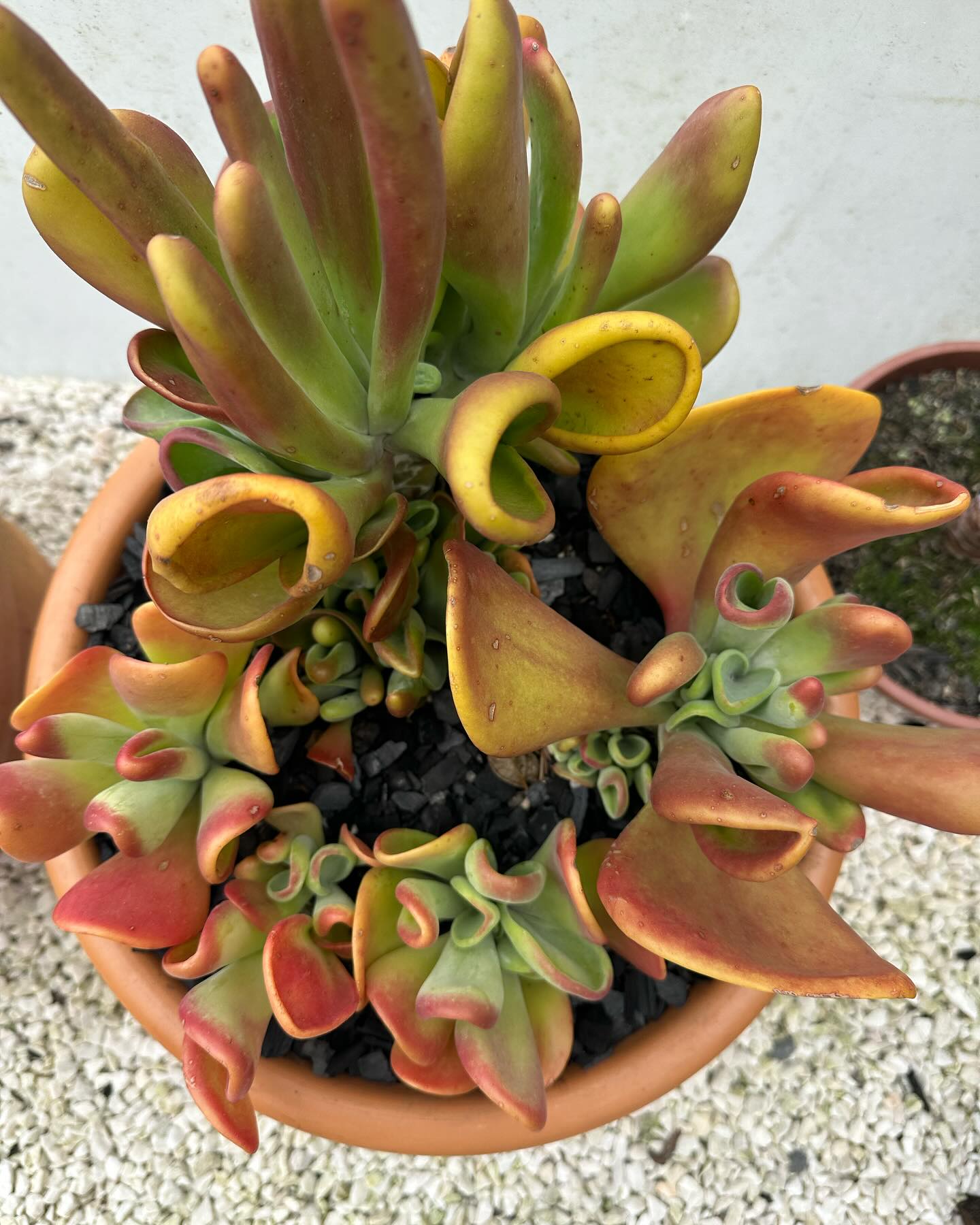
- Why It’s Great: Clusters of vibrant flowers in various shades.
- Light: Bright, indirect light. Tolerates lower light levels.
- Watering: Allow the soil to dry out between waterings.
- Size: Varies by variety; typically ranges from 6-18 inches tall.
- Soil: Well-draining potting mix.
- Feeding: Fertilize every 2-4 weeks during the growing season.
- Flowering: Colorful flowers last for weeks.
- Ease of growing rating: Easy.
- Rattlesnake Plant (Calathea lancifolia)
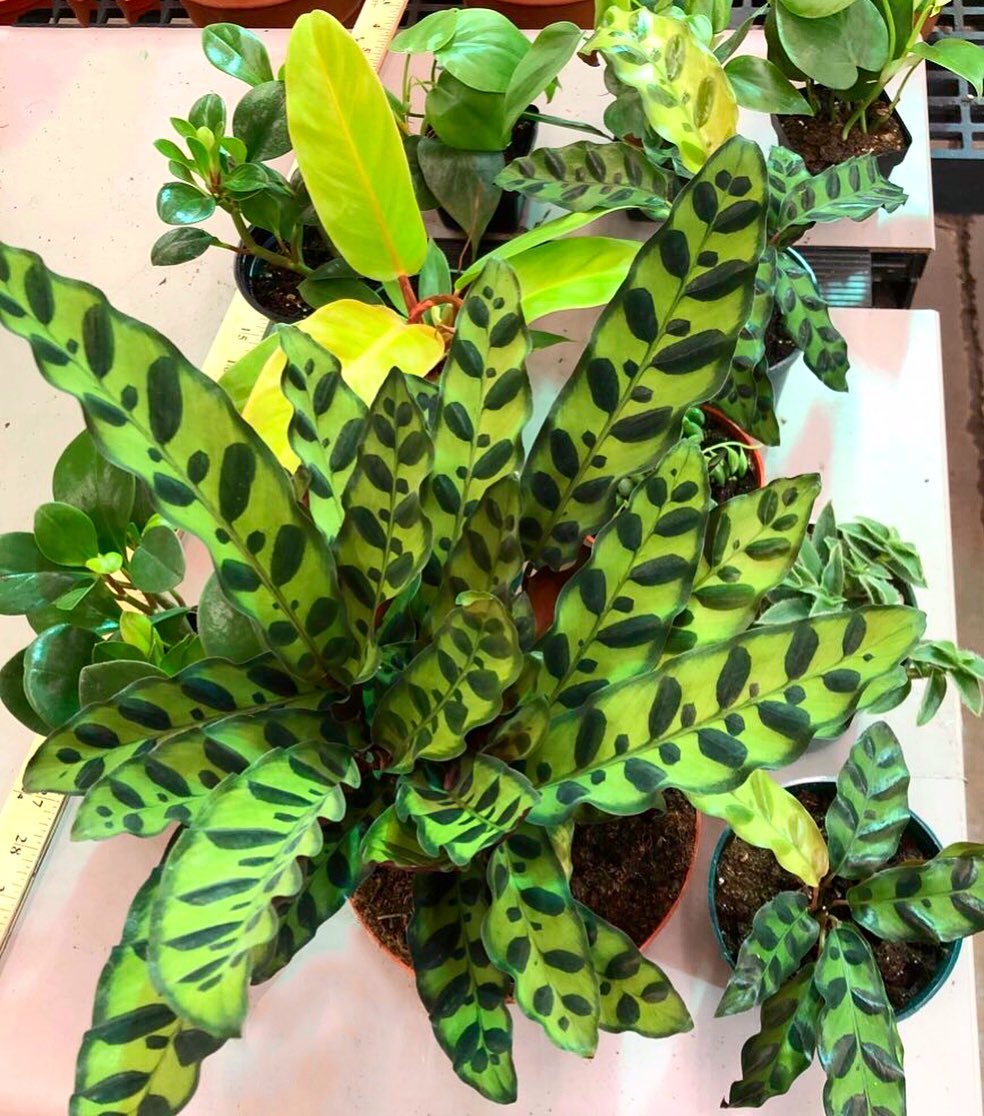
- Why It’s Great: Unique lance-shaped leaves with striking patterns and colors.
- Light: Medium to bright, indirect light. Avoid direct sun.
- Watering: Keep the soil consistently moist, but not waterlogged.
- Size: Compact, around 2-3 feet tall.
- Soil: Well-draining, peat-based potting mix.
- Feeding: Fertilize every 2-4 weeks during the growing season.
- Flowering: Rarely flowers indoors.
- Ease of growing rating: Moderate.
- Nasturtium
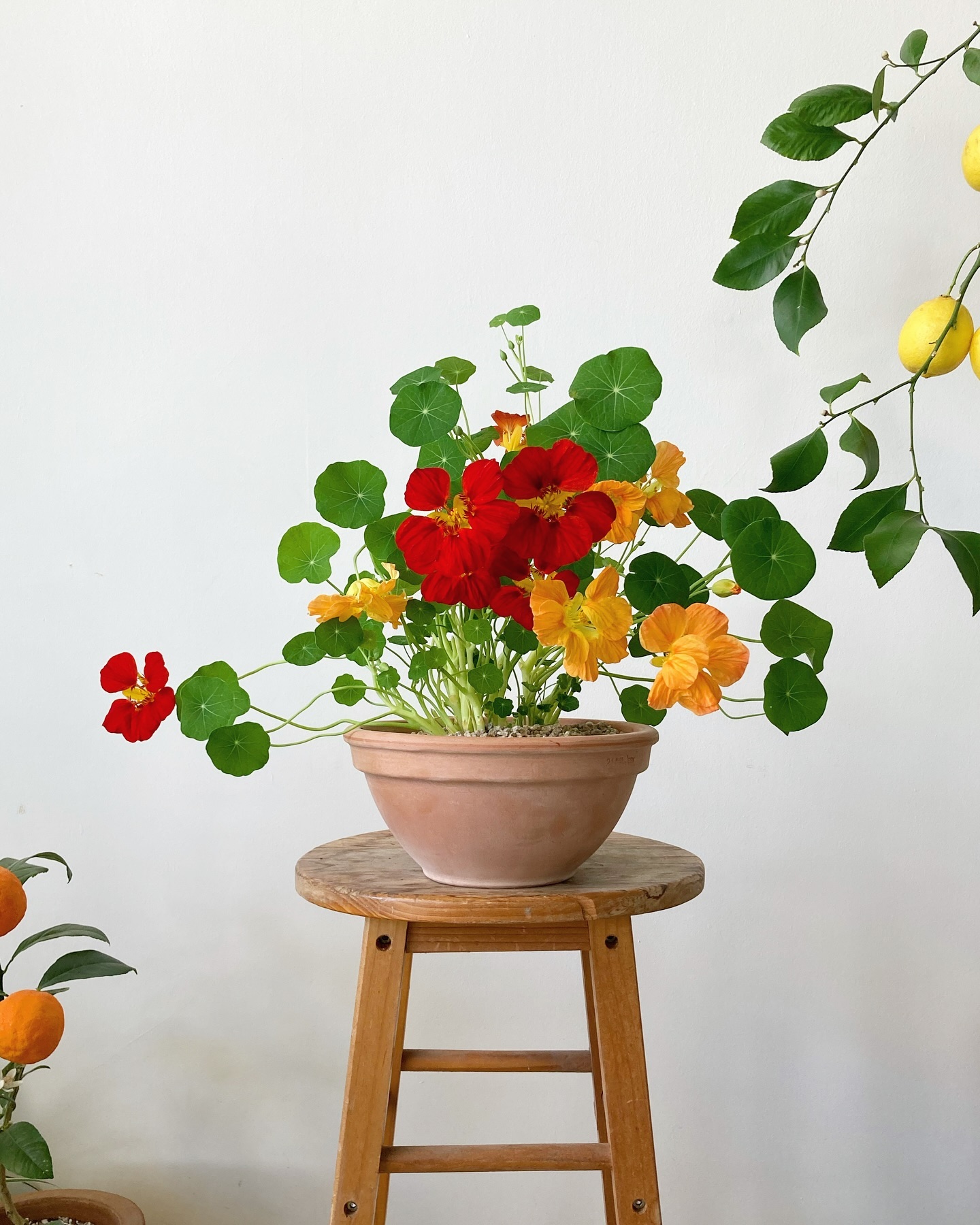
- Why It’s Great: Edible trailing plants with vibrant flowers in shades of orange, red, yellow, and pink.
- Light: Bright, indirect light. Tolerates lower light levels.
- Watering: Keep soil moist, but not waterlogged.
- Size: Trailing vines can reach several feet in length.
- Soil: Well-draining potting mix.
- Feeding: Fertilize every 2-4 weeks during the growing season.
- Flowering: Blooms abundantly with edible flowers.
- Ease of growing rating: Easy.
- Begonia Rex
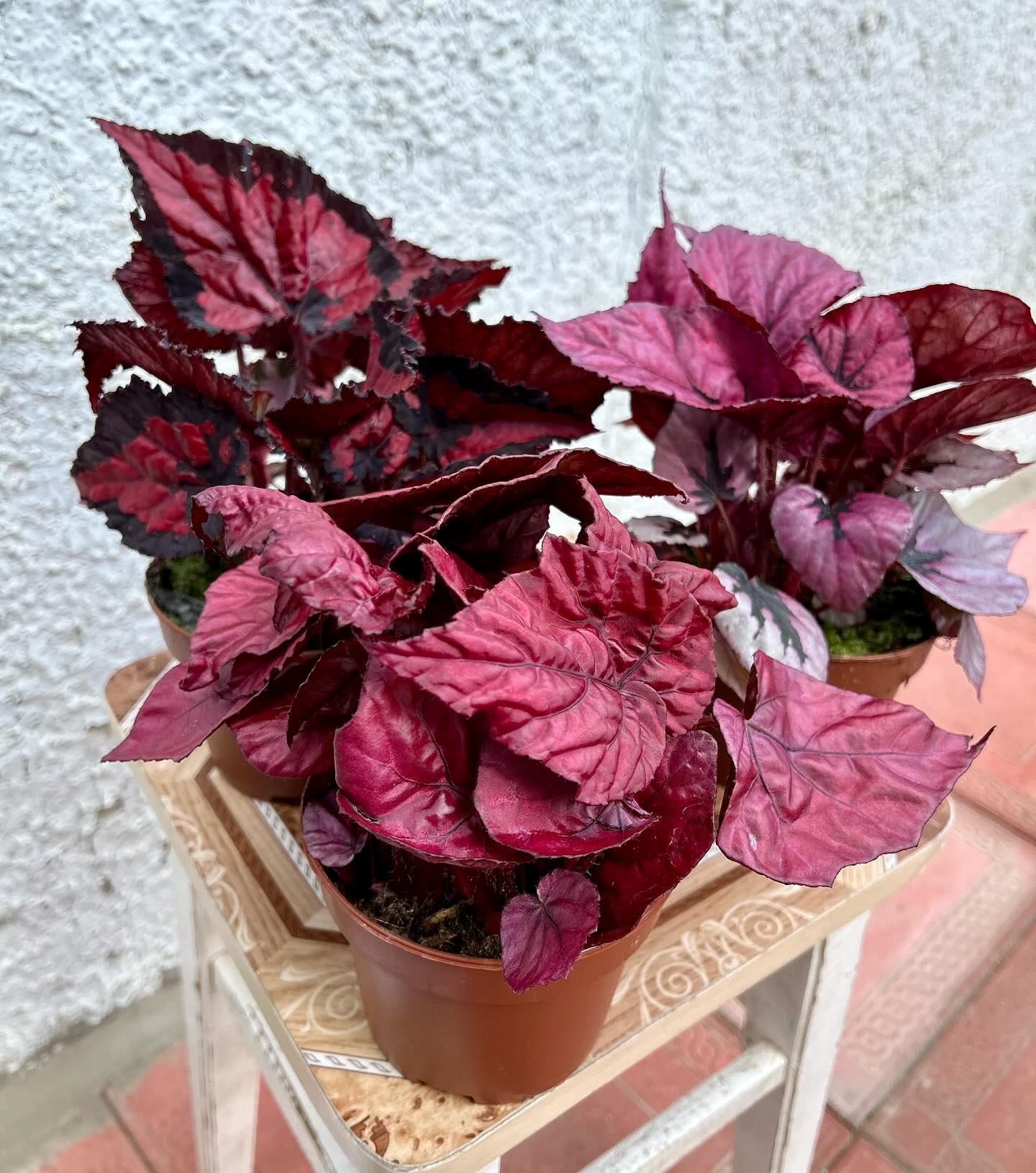
- Why It’s Great: Show-stopping leaves with unique textures and vibrant colors.
- Light: Medium to bright, indirect light. Protect from direct sun.
- Watering: Keep soil consistently moist; avoid overwatering.
- Size: Compact, usually around 12-18 inches tall.
- Soil: Well-draining potting mix.
- Feeding: Fertilize every 2-4 weeks during the growing season.
- Flowering: Rarely flowers indoors.
- Ease of growing rating: Moderate.
- Alocasia
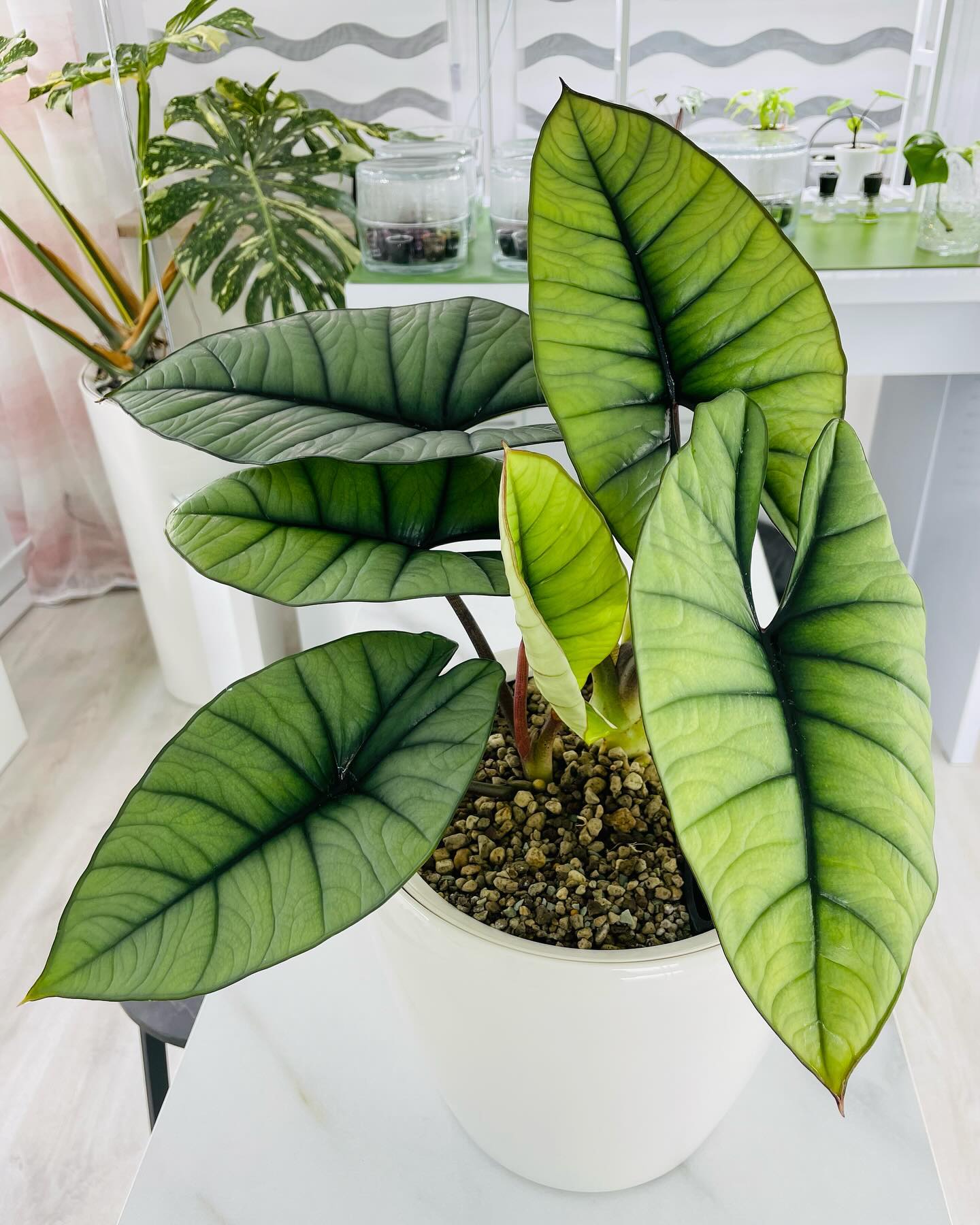
- Why It’s Great: Large, heart-shaped leaves with unique patterns and colors.
- Light: Medium to bright, indirect light. Avoid direct sun.
- Watering: Keep the soil evenly moist, but not waterlogged.
- Size: Can reach heights of 2-6 feet, depending on the variety.
- Soil: Well-draining potting mix.
- Feeding: Fertilize every 2-4 weeks during the growing season.
- Flowering: Rarely flowers indoors.
- Ease of growing rating: Moderate.
- Maranta (Prayer Plant)
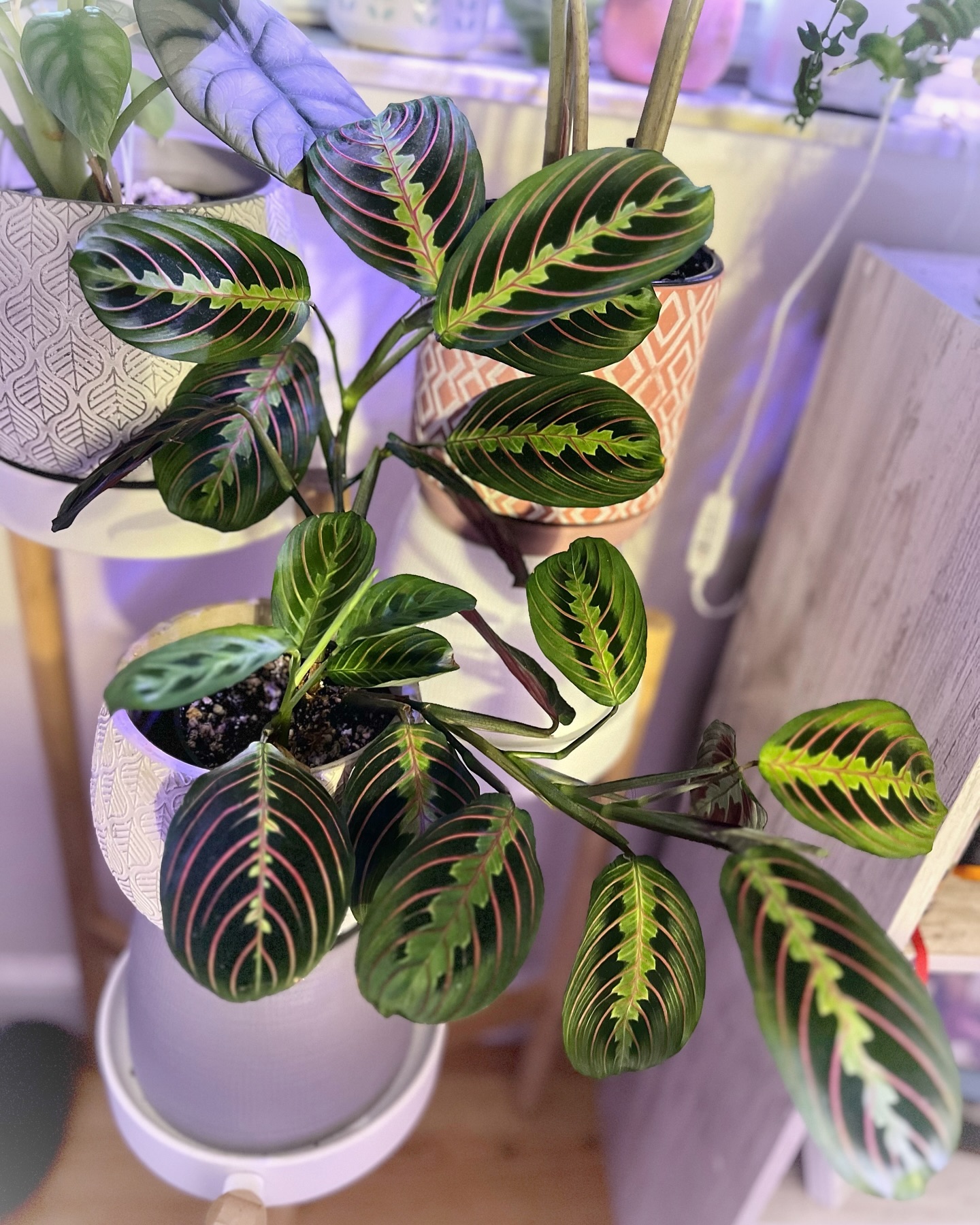
- Why It’s Great: Colorful, patterned leaves that fold up at night, resembling praying hands.
- Light: Medium to bright, indirect light. Protect from direct sun.
- Watering: Keep the soil consistently moist, but not waterlogged.
- Size: Compact, usually around 6-12 inches tall.
- Soil: Well-draining, peat-based potting mix.
- Feeding: Fertilize every 2-4 weeks during the growing season.
- Flowering: Rarely flowers indoors.
- Ease of growing rating: Moderate.
- Flamingo Lily (Anthurium andraeanum)
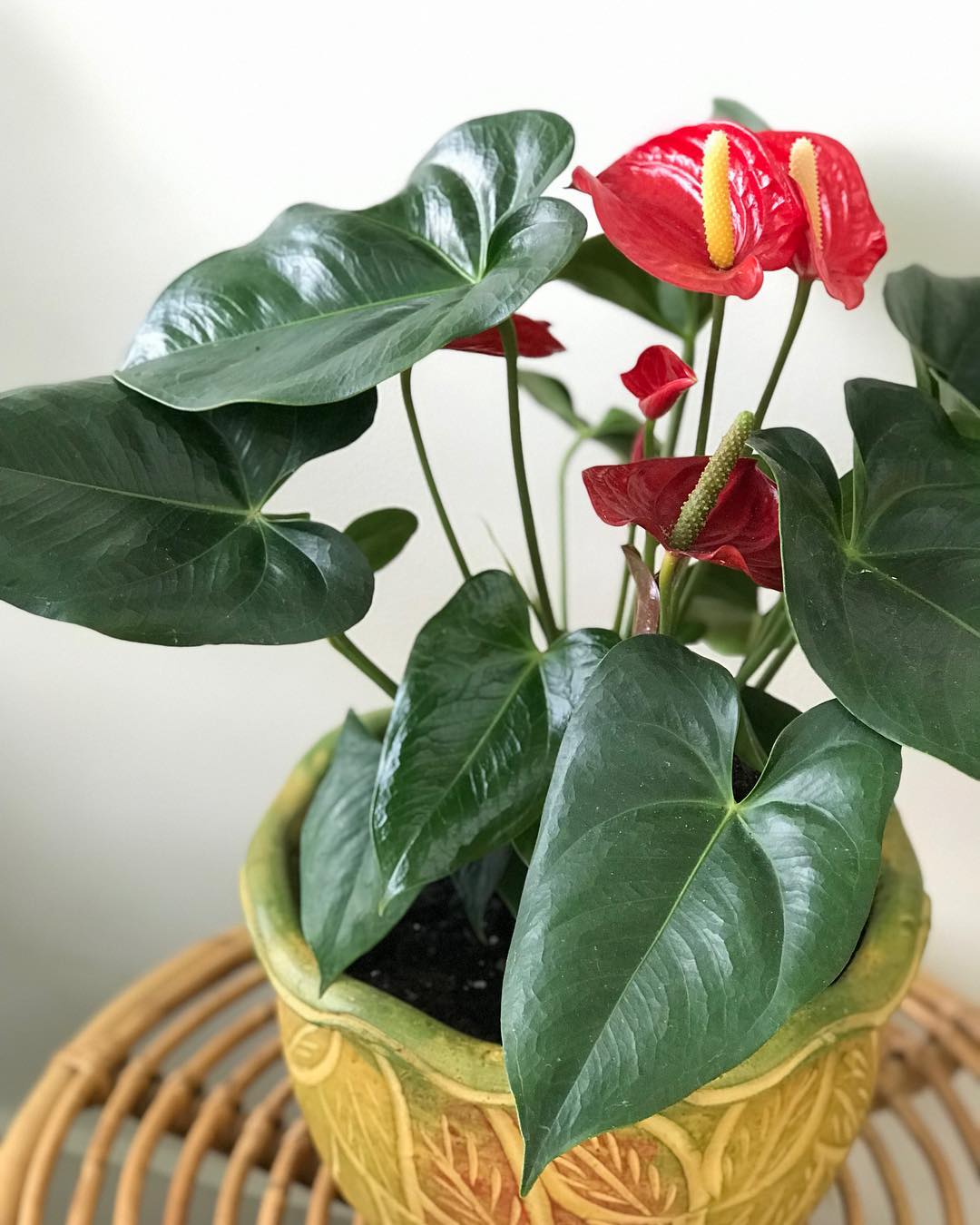
- Why It’s Great: Showy, heart-shaped flowers in vibrant shades of red, pink, or white.
- Light: Medium to bright, indirect light. Avoid direct sun.
- Watering: Allow the top inch of soil to dry between waterings.
- Size: Varies; typically around 1-2 feet tall.
- Soil: Well-draining potting mix.
- Feeding: Fertilize every 2-4 weeks during the growing season.
- Flowering: Long-lasting flowers.
- Ease of growing rating: Moderate.
- Purple Heart (Tradescantia pallida)
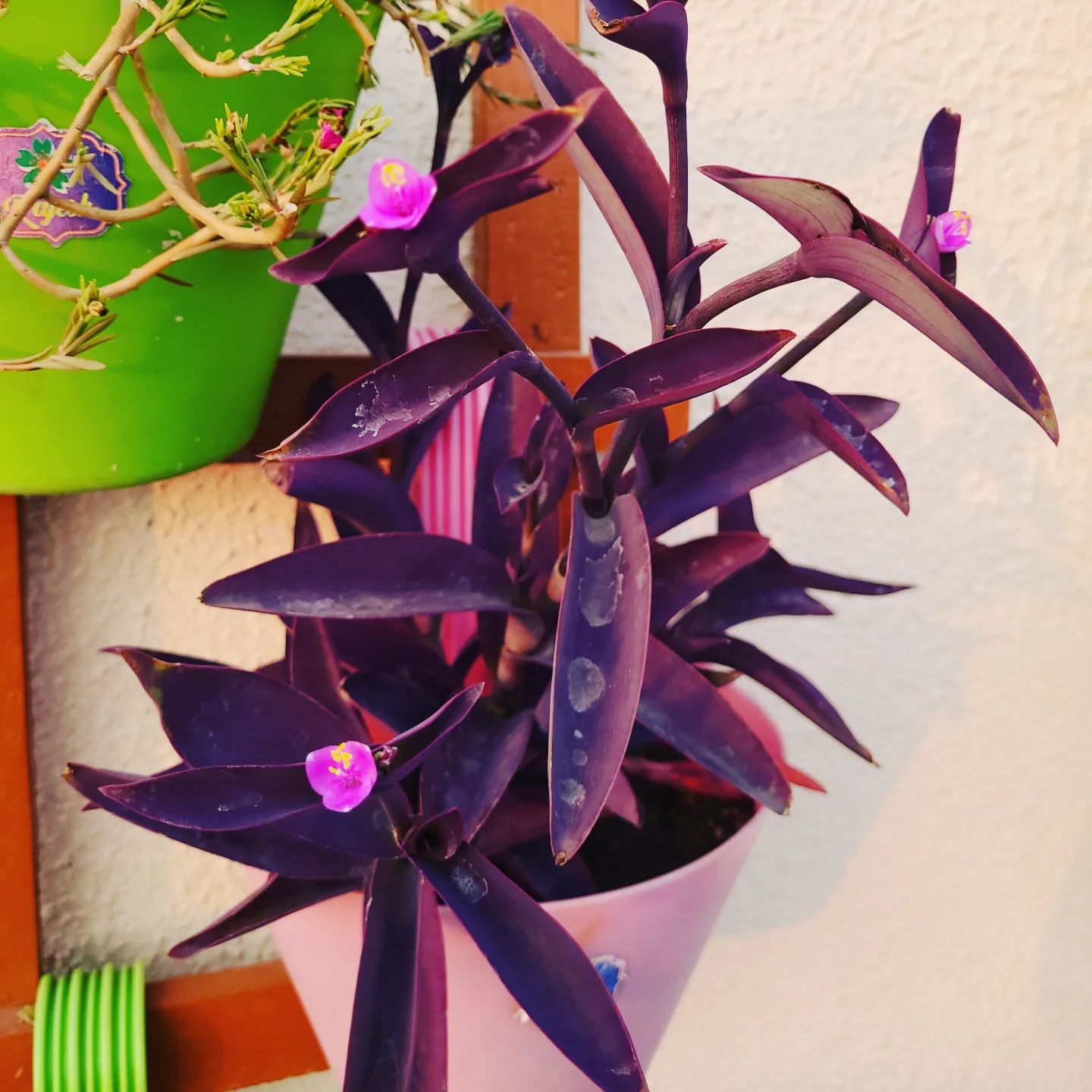
- Why It’s Great: Gorgeous purple foliage that cascades down when placed in hanging baskets or as ground cover.
- Light: Bright, indirect light. Tolerates lower light levels.
- Watering: Keep soil consistently moist.
- Size: Trailing vines can reach several feet in length.
- Soil: Well-draining potting mix.
- Feeding: Fertilize every 2-4 weeks during the growing season.
- Flowering: Small pink or purple flowers.
- Ease of growing rating: Easy.
- Oxalis
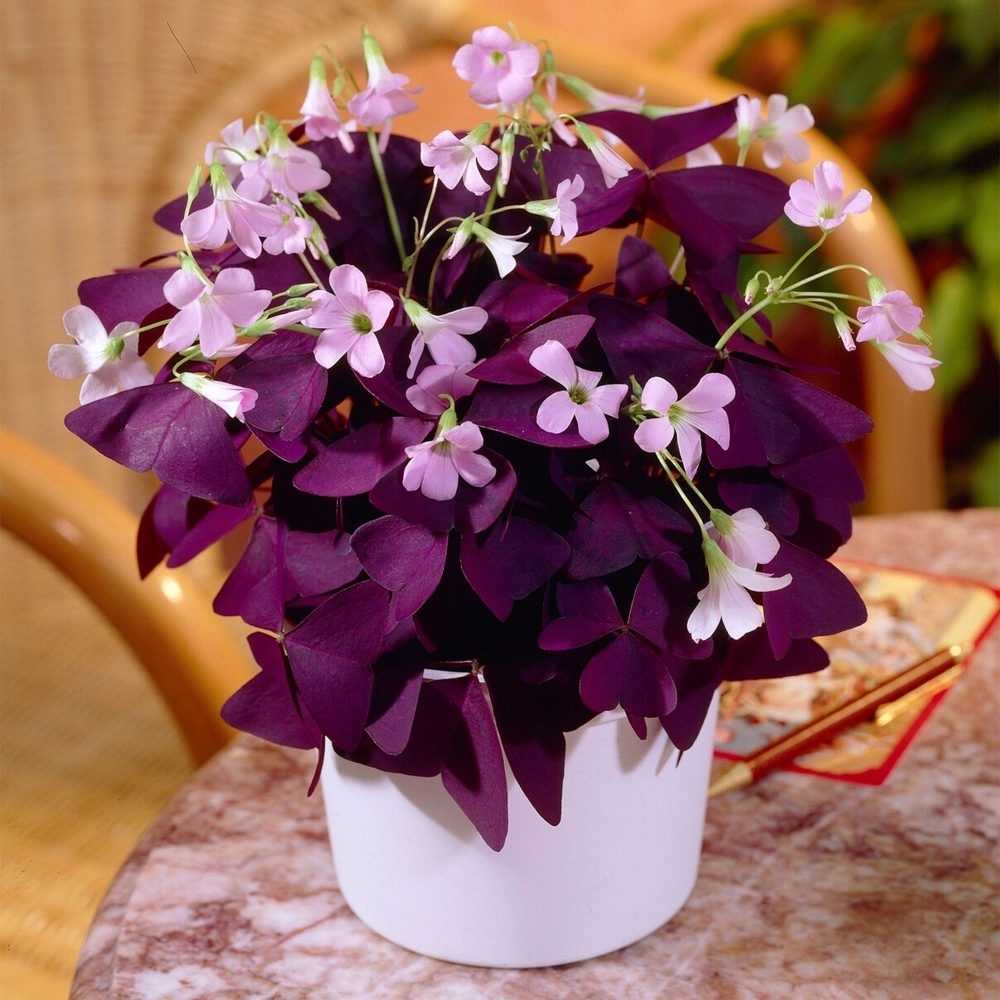
- Why It’s Great: Unique shamrock-shaped leaves in shades of green, purple, or burgundy.
- Light: Bright, indirect light. Tolerates lower light levels.
- Watering: Keep soil evenly moist. Allow the top inch to dry between waterings.
- Size: Compact, usually around 6-12 inches tall.
- Soil: Well-draining potting mix.
- Feeding: Fertilize every 2-4 weeks during the growing season.
- Flowering: Pink or white flowers appear periodically.
- Ease of growing rating: Easy.
- Cordyline
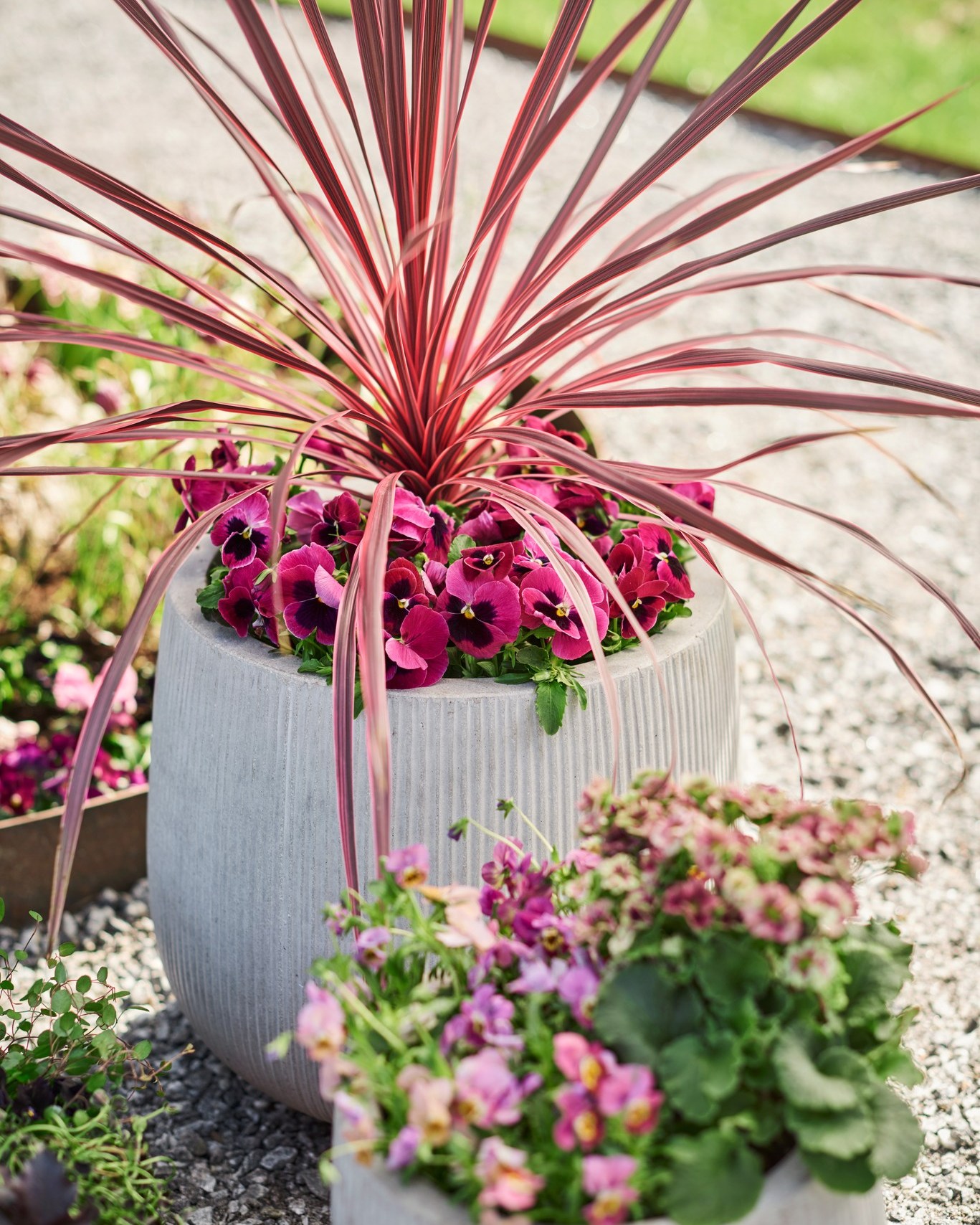
- Why It’s Great: Colorful, sword-shaped leaves add a tropical touch to any space.
- Light: Bright, indirect light. Tolerates lower light levels.
- Watering: Allow the soil to partially dry out between waterings.
- Size: Varies by variety; some can reach several feet tall.
- Soil: Well-draining potting mix.
- Feeding: Fertilize every 2-4 weeks during the growing season.
- Flowering: Rarely flowers indoors.
- Ease of growing rating: Moderate.
- Coleus
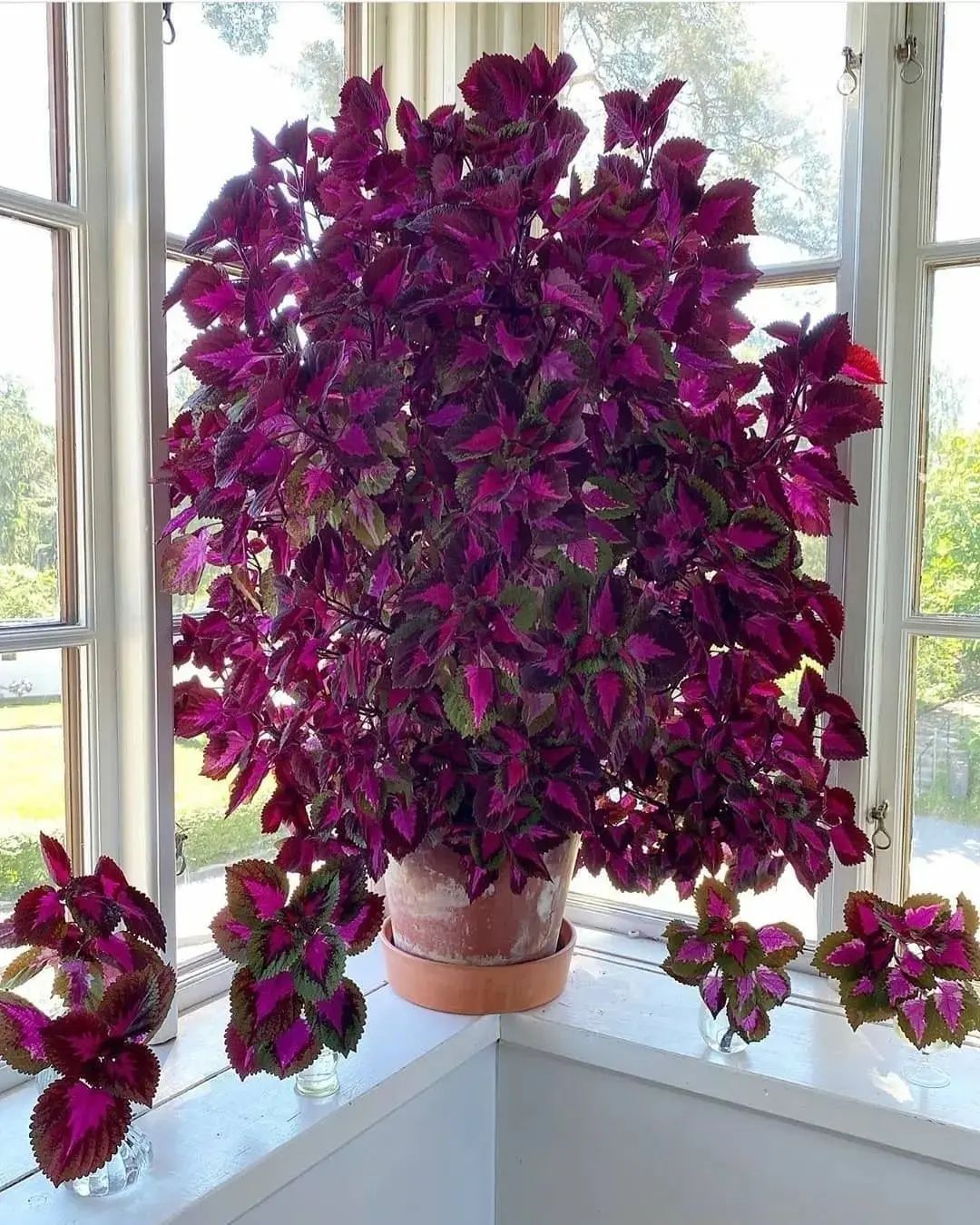
- Why It’s Great: Colorful leaves in various shapes and patterns.
- Light: Bright, indirect light. Tolerates partial shade.
- Watering: Keep soil consistently moist.
- Size: Varies by variety; typically ranges from 1-3 feet tall.
- Soil: Well-draining potting mix.
- Feeding: Fertilize every 2-4 weeks during the growing season.
- Flowering: Some varieties produce small, insignificant flowers.
- Ease of growing rating: Easy.
- Golden Pothos
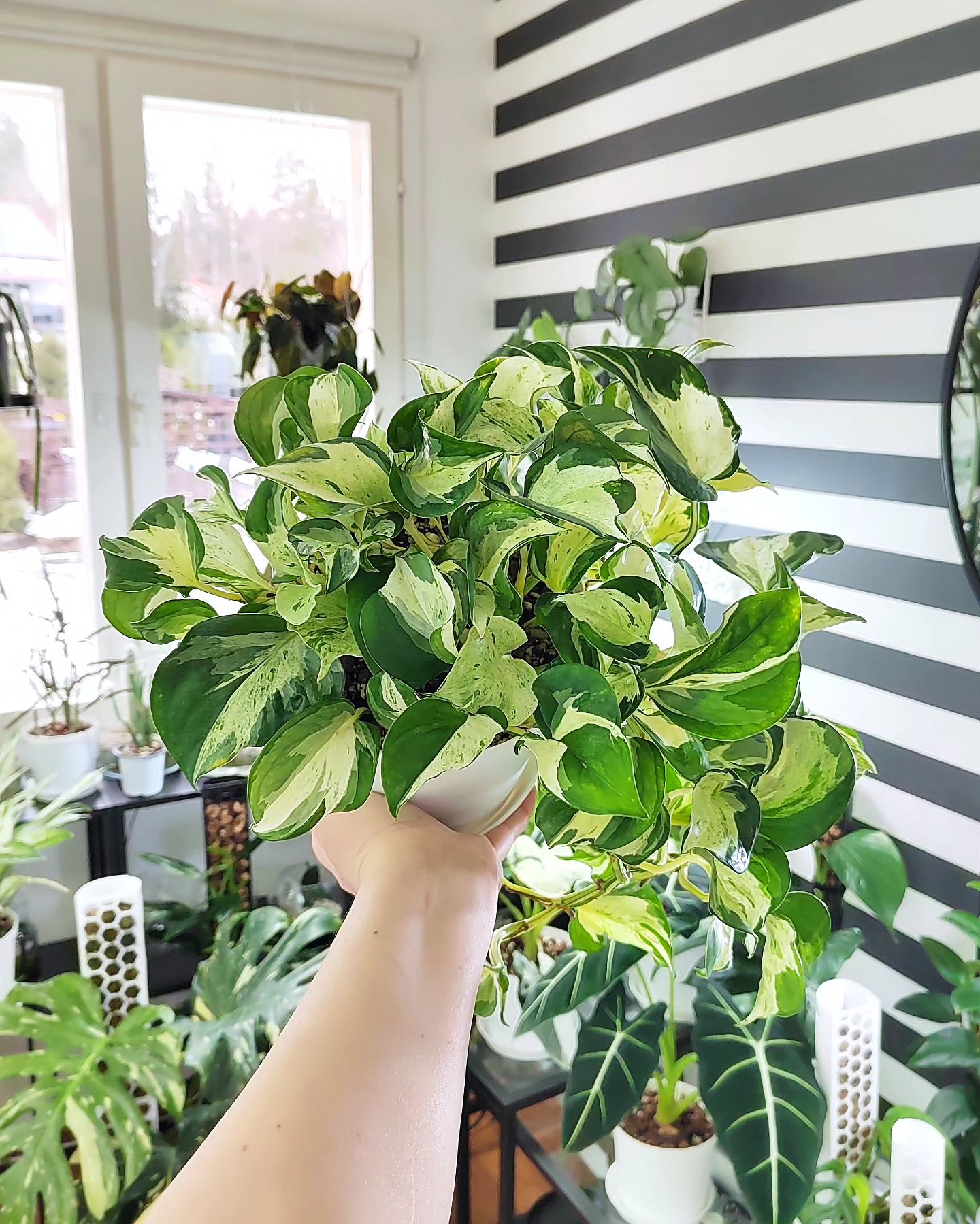
- Why It’s Great: Easy-to-grow plant with cascading vines and heart-shaped leaves in shades of green and yellow.
- Light: Low to bright, indirect light. Tolerates lower light levels.
- Watering: Allow the top inch of soil to dry between waterings.
- Size: Vines can grow several feet long.
- Soil: Well-draining potting mix.
- Feeding: Fertilize every 4-6 weeks during the growing season.
- Flowering: Rarely flowers indoors.
- Ease of growing rating: Easy.
- Polka Dot Begonia (Begonia maculata)
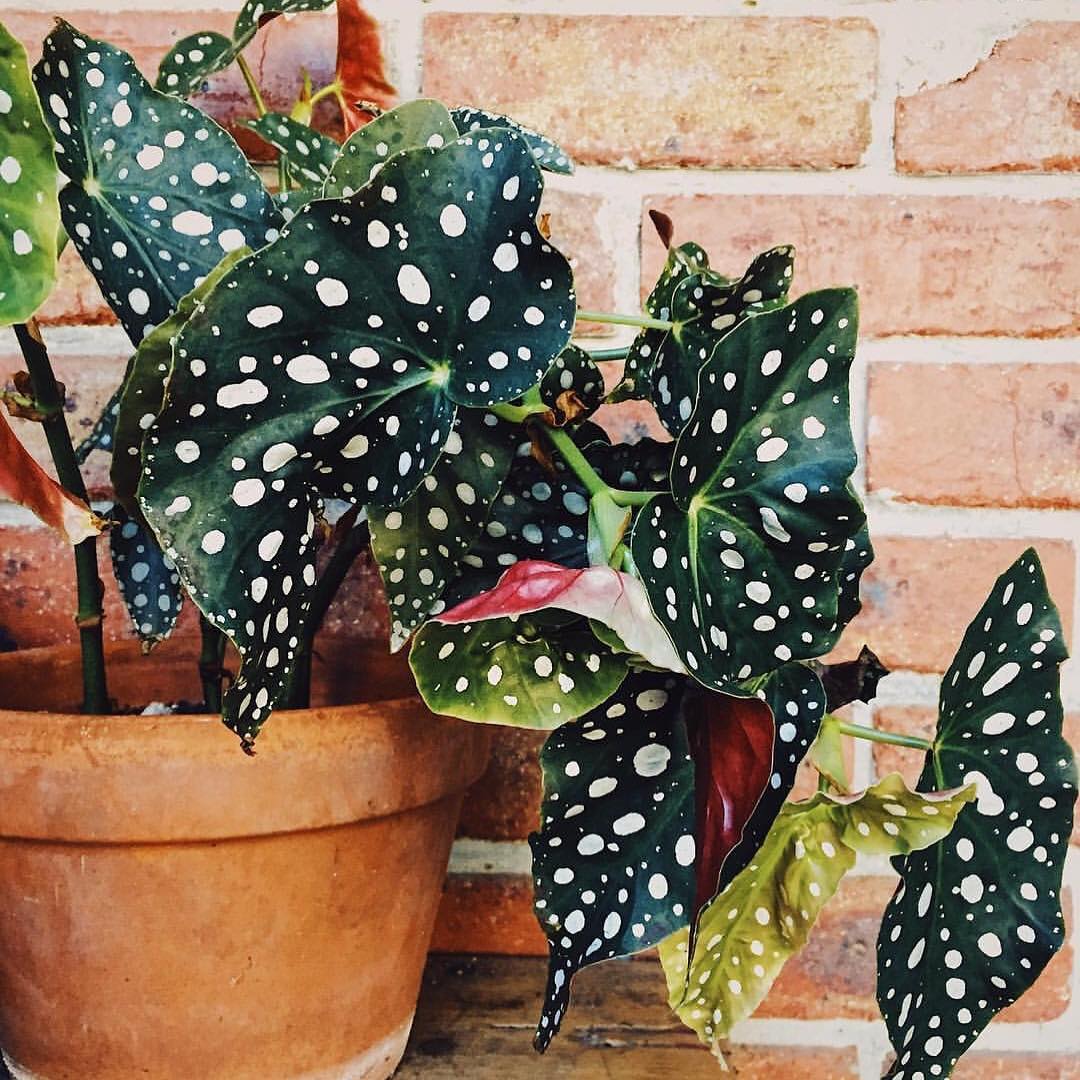
- Why It’s Great: Distinctive leaves with silver spots and red undersides.
- Light: Medium to bright, indirect light. Protect from direct sun.
- Watering: Allow the top inch of soil to dry between waterings.
- Size: Compact, typically around 12-18 inches tall.
- Soil: Well-draining potting mix.
- Feeding: Fertilize every 2-4 weeks during the growing season.
- Flowering: Pink flowers appear periodically.
- Ease of growing rating: Moderate.
- Chinese Money Plant (Pilea peperomioides)
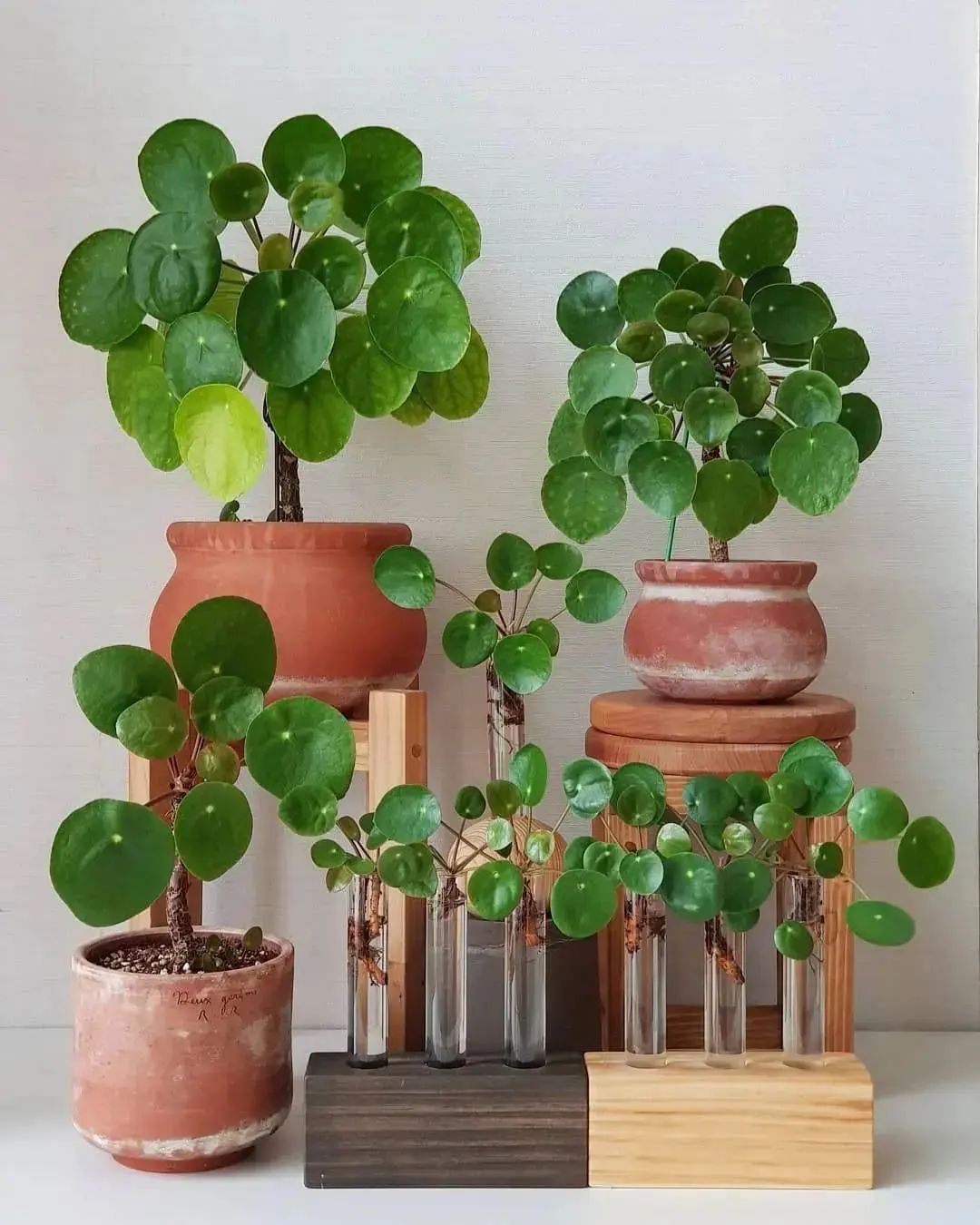
- Why It’s Great: Round, pancake-shaped leaves on unique upright stems.
- Light: Medium to bright, indirect light. Avoid direct sun.
- Watering: Allow the top inch of soil to dry between waterings.
- Size: Compact, usually around 8-12 inches tall.
- Soil: Well-draining potting mix.
- Feeding: Fertilize every 4-6 weeks during the growing season.
- Flowering: Insignificant white flowers.
- Ease of growing rating: Easy.
- Purple Passion Plant
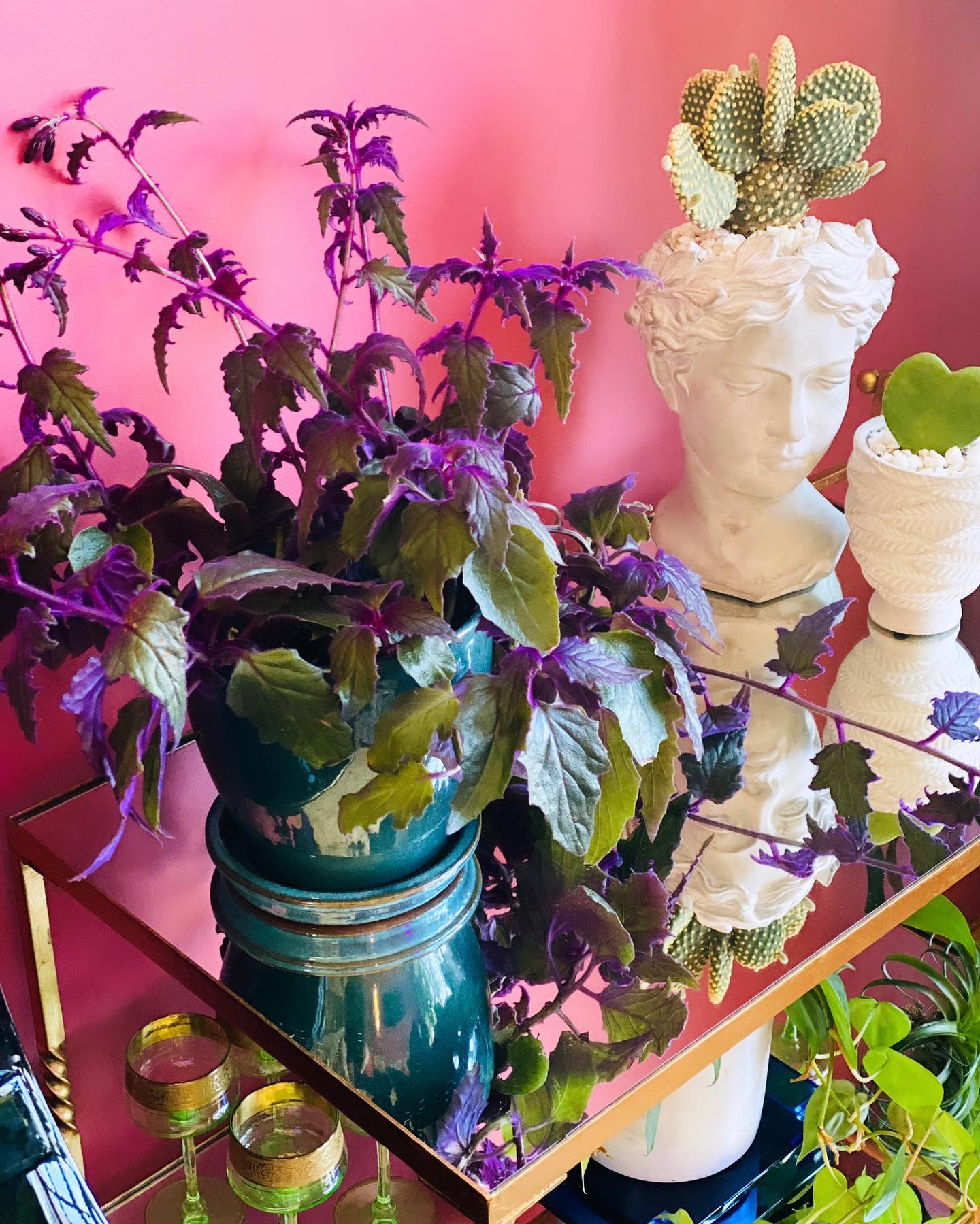
- Why It’s Great: Velvety, purple foliage and unique texture.
- Light: Bright, indirect light. Avoid direct sun.
- Watering: Allow the soil to partially dry out between waterings.
- Size: Vines can reach several feet long.
- Soil: Well-draining potting mix.
- Feeding: Fertilize every 2-4 weeks during the growing season.
- Flowering: Small, insignificant purple flowers.
- Ease of growing rating: Easy.
- Flame Violet (Episcia)
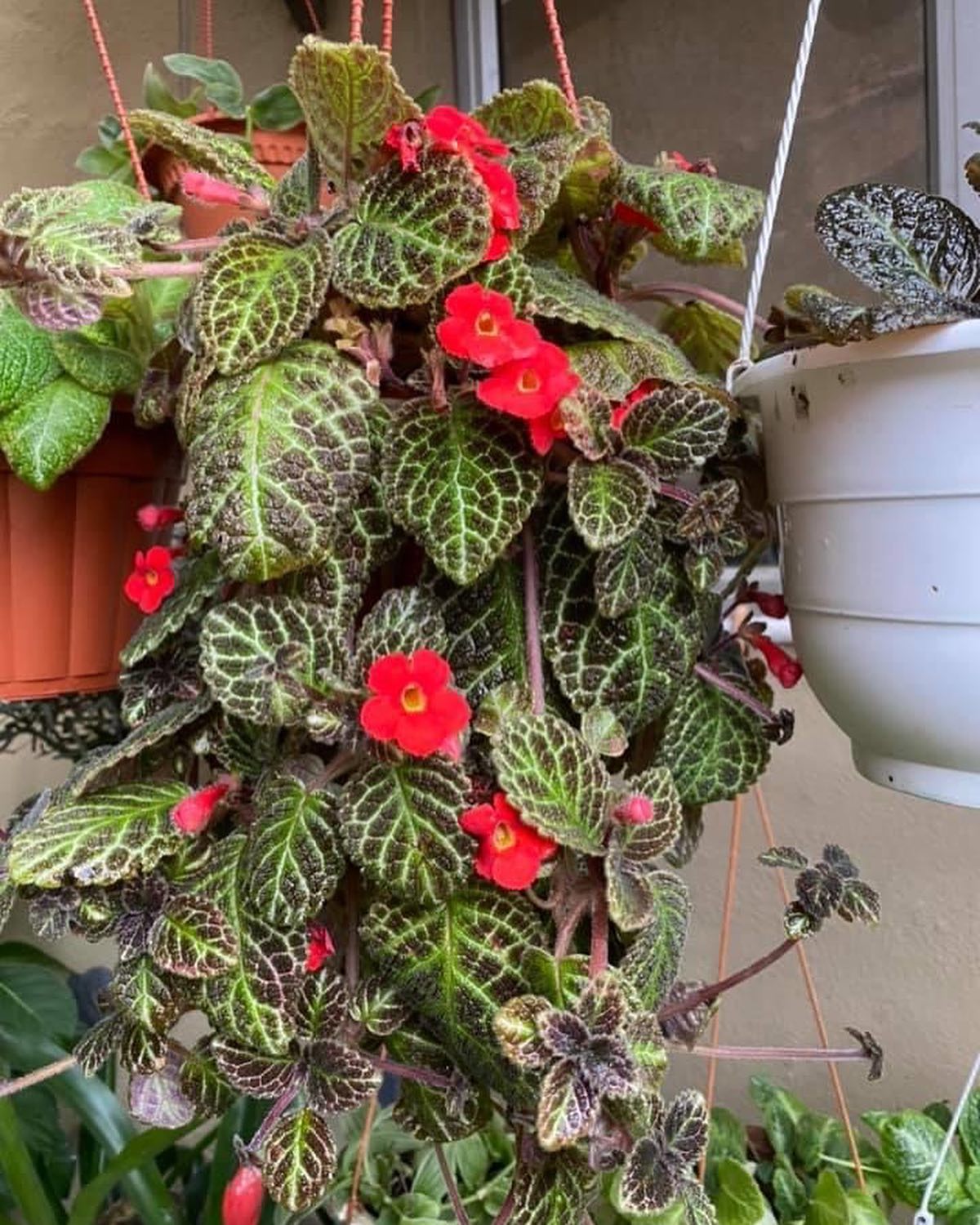
- Why It’s Great: Colorful, creeping plant with small, velvety leaves and vibrant flowers.
- Light: Bright, indirect light. Protect from intense afternoon sun.
- Watering: Keep soil consistently moist.
- Size: Compact, usually around 6-8 inches tall.
- Soil: Well-draining potting mix.
- Feeding: Fertilize every 2-4 weeks during the growing season.
- Flowering: Showy flowers in various colors.
- Ease of growing rating: Moderate.
- Lipstick Bromeliad
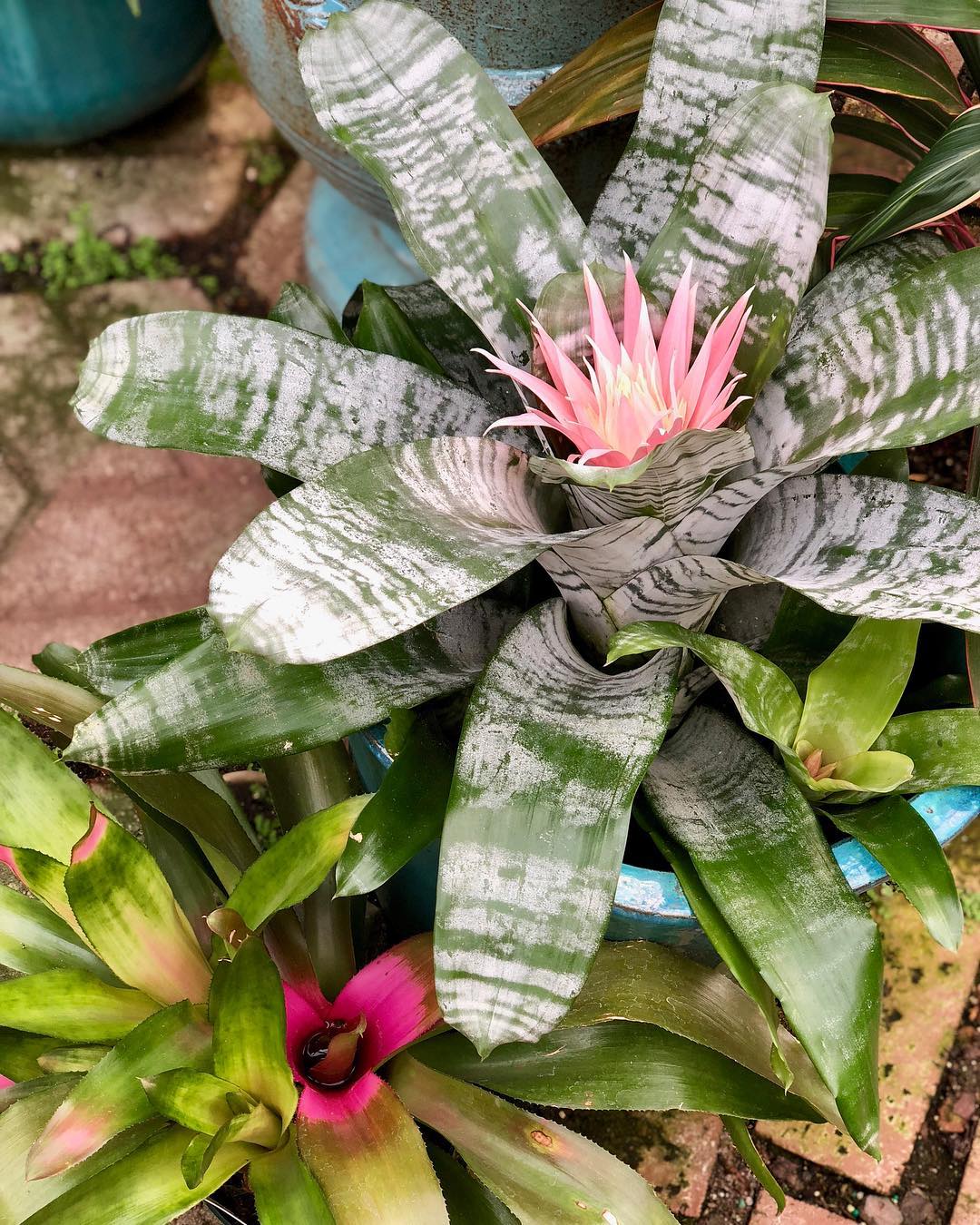
- Why It’s Great: Showy, lipstick-shaped flowers and colorful foliage.
- Light: Bright, indirect light. Avoid direct sun.
- Watering: Keep the central cup filled with water and change it often.
- Size: Varies by variety; typically ranges from 6-18 inches tall.
- Soil: Well-draining potting mix.
- Feeding: Fertilize with a balanced liquid fertilizer every 2-3 months.
- Flowering: Colorful bracts make a stunning display.
- Ease of growing rating: Moderate.
- Orchid Cactus (Epiphyllum)
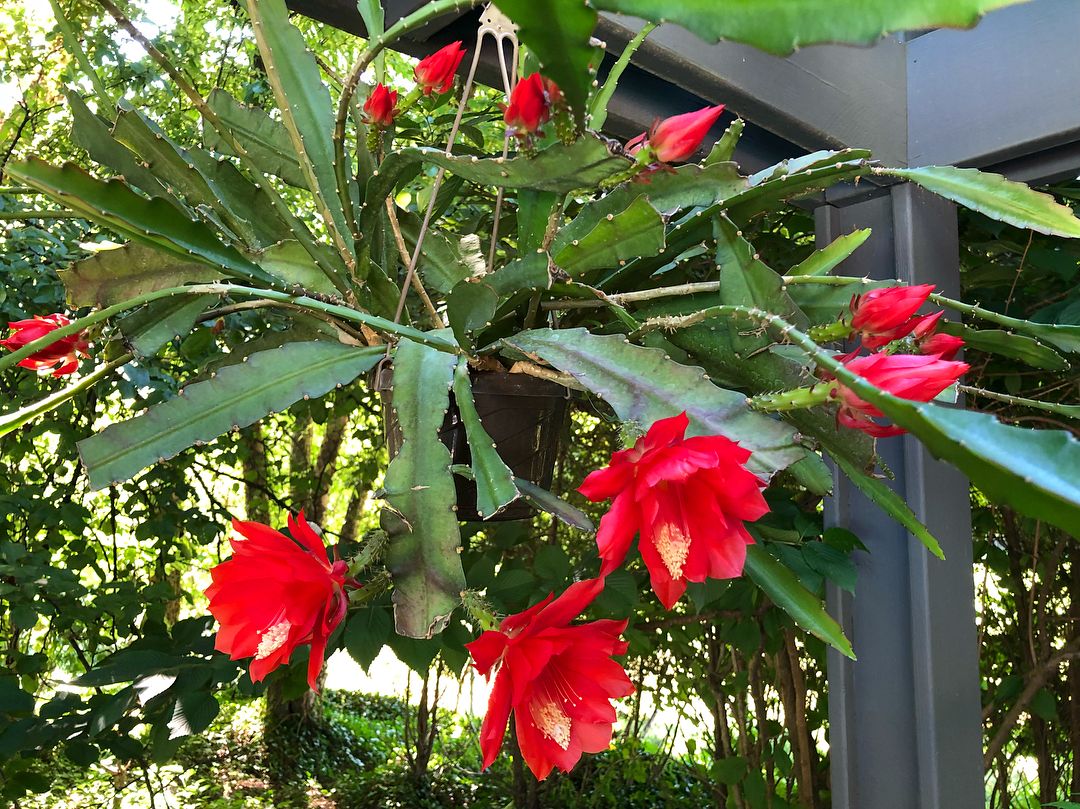
- Why It’s Great: Unique, cascading foliage and vibrant flowers.
- Light: Bright, indirect light. Avoid direct sun.
- Watering: Allow the top inch of soil to dry between waterings.
- Size: Trailing vines can reach several feet in length.
- Soil: Well-draining potting mix.
- Feeding: Fertilize every 2-4 weeks during the growing season.
- Flowering: Showy flowers in various colors.
- Ease of growing rating: Moderate.
- Heuchera
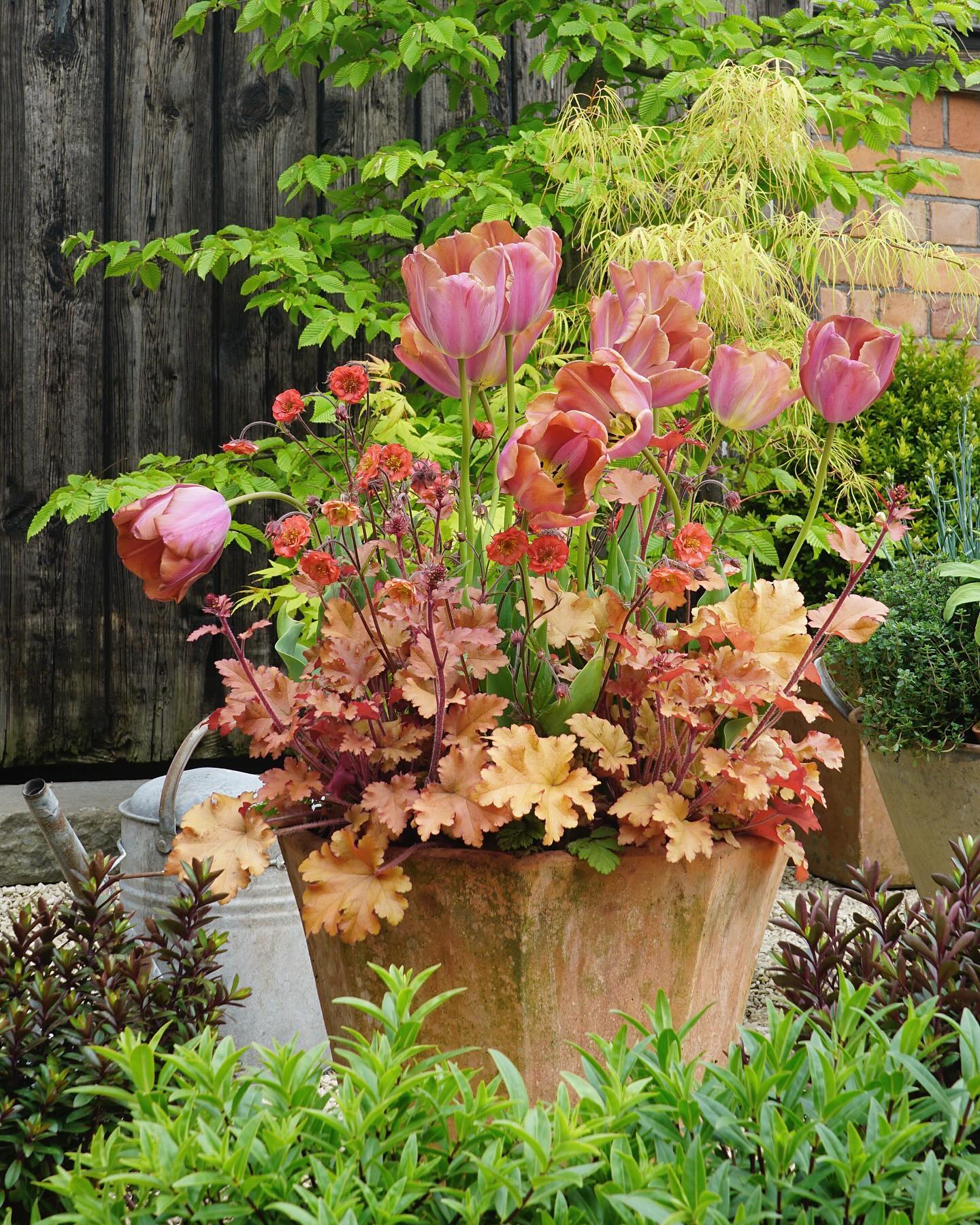
- Why It’s Great: Colorful foliage in various shades, shapes, and patterns.
- Light: Medium to bright, indirect light. Protect from intense sun.
- Watering: Keep soil consistently moist.
- Size: Varies by variety; typically around 12-18 inches tall.
- Soil: Well-draining potting mix.
- Feeding: Fertilize every 2-4 weeks during the growing season.
- Flowering: Showy flowers in various colors.
- Ease of growing rating: Moderate.
- Dendrobium Orchid
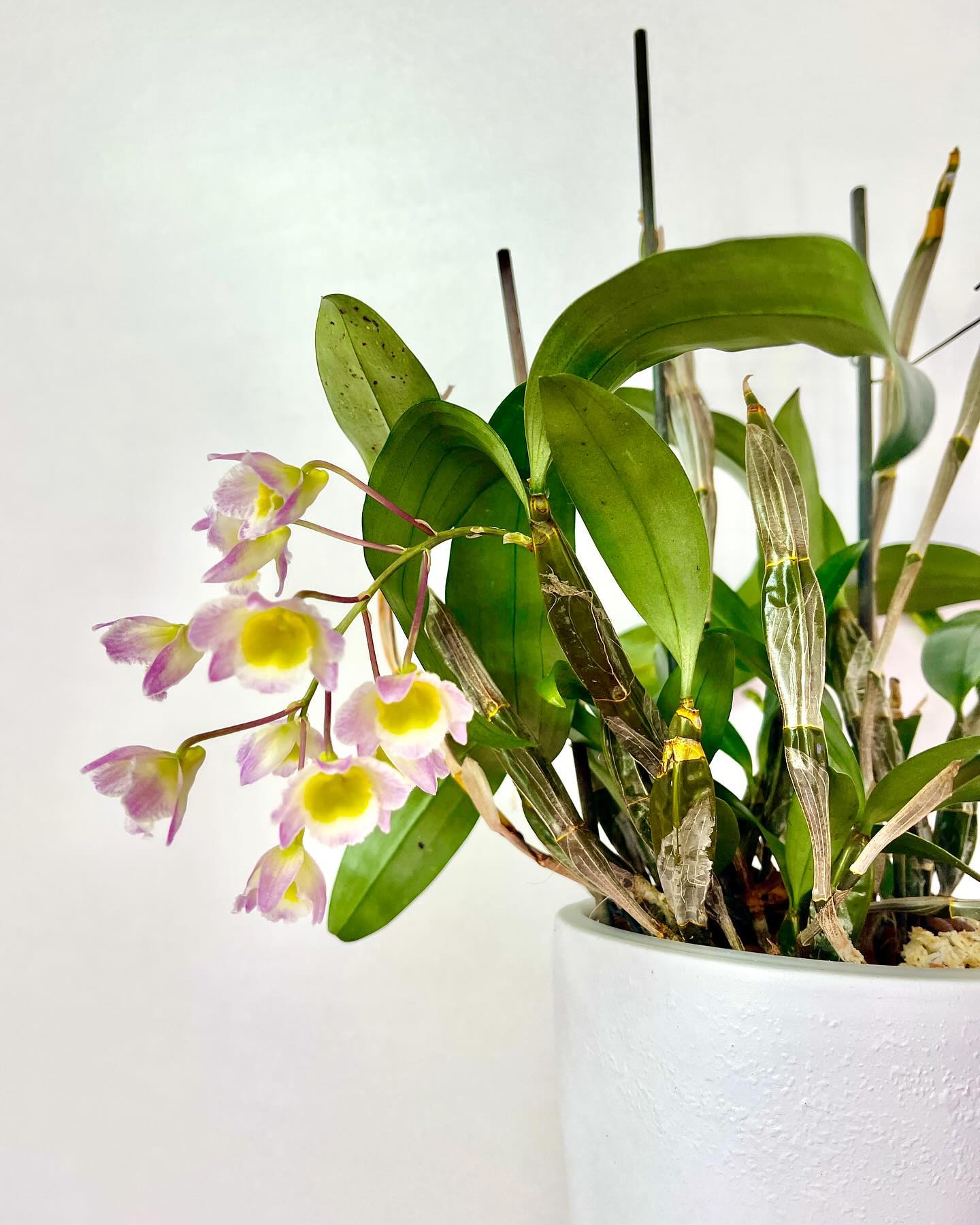
- Why It’s Great: Fragrant, elegant flowers in various colors.
- Light: Bright, indirect light. Avoid direct sun.
- Watering: Allow the top inch of soil to dry between waterings. Water orchid with ice cubes.
- Size: Varies by variety; typically reaches 1-3 feet tall.
- Soil: Well-draining orchid mix or bark.
- Feeding: Fertilize with orchid-specific fertilizer every 2-4 weeks during the growing season.
- Flowering: Blooms can last several weeks or months.
- Ease of growing rating: Moderate.
- Goldfish Plant (Nematanthus)
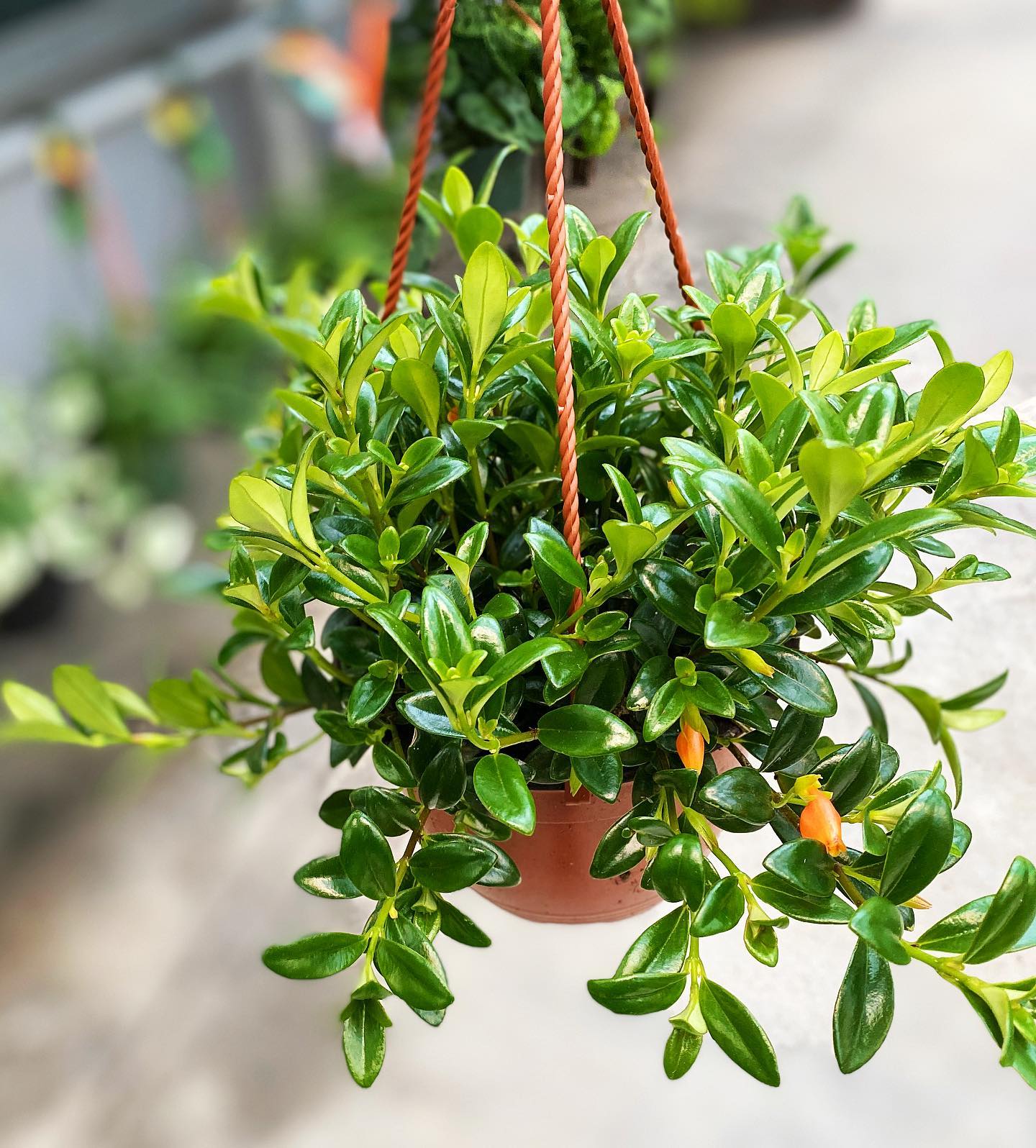
- Why It’s Great: Unique, orange or yellow flowers resembling goldfish.
- Light: Bright, indirect light. Protect from intense sun.
- Watering: Keep soil consistently moist.
- Size: Compact, around 6-12 inches tall.
- Soil: Well-draining potting mix.
- Feeding: Fertilize every 2-4 weeks during the growing season.
- Flowering: Blooms with goldfish-like flowers.
- Ease of growing rating: Easy.
- African Mask Plant (Alocasia amazonica)
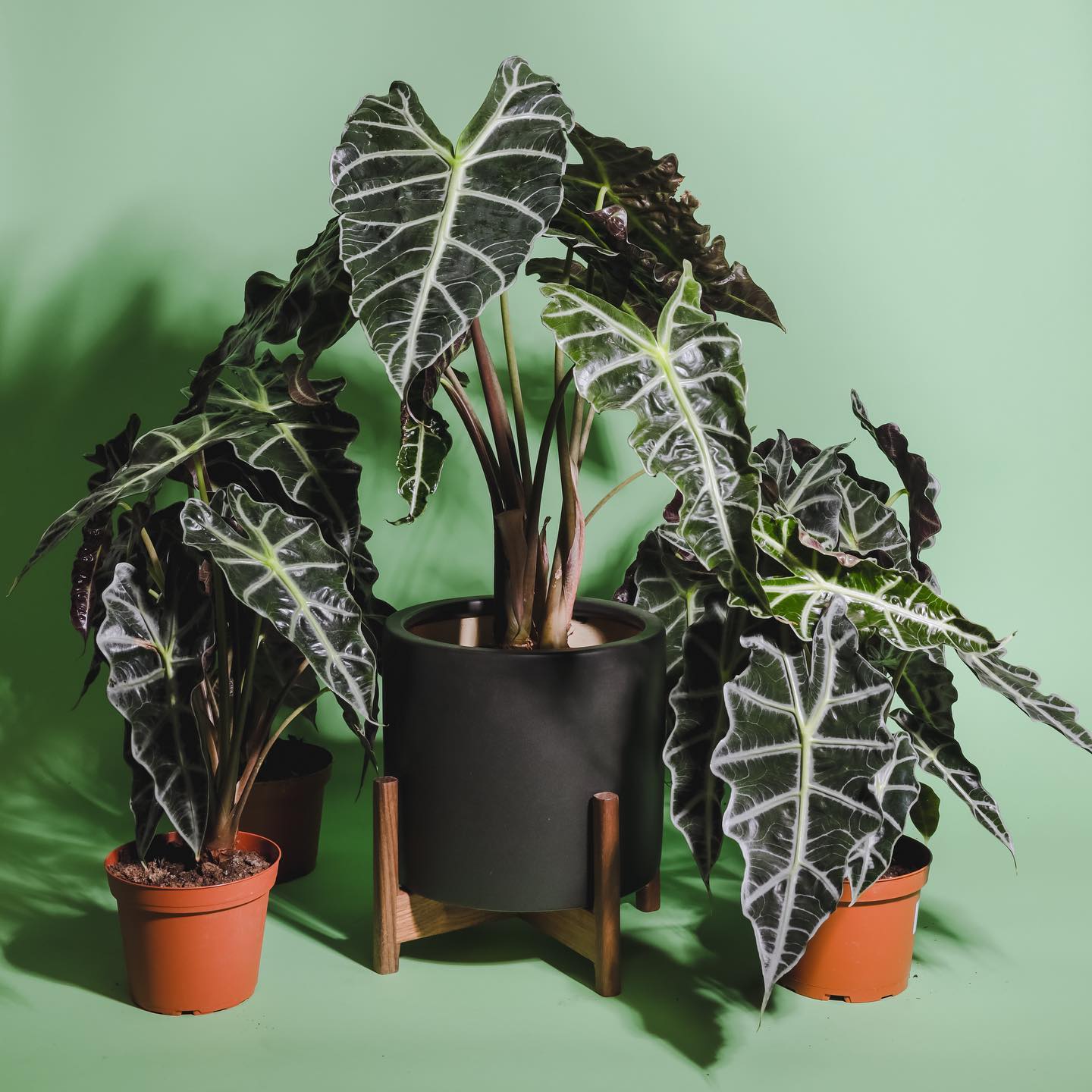
- Why It’s Great: Striking, arrow-shaped leaves with prominent veins.
- Light: Bright, indirect light. Avoid direct sun.
- Watering: Keep the soil evenly moist, but not waterlogged.
- Size: Can reach heights of 2-4 feet.
- Soil: Well-draining potting mix.
- Feeding: Fertilize every 2-4 weeks during the growing season.
- Flowering: Rarely flowers indoors.
- Ease of growing rating: Moderate.
- Gardenia
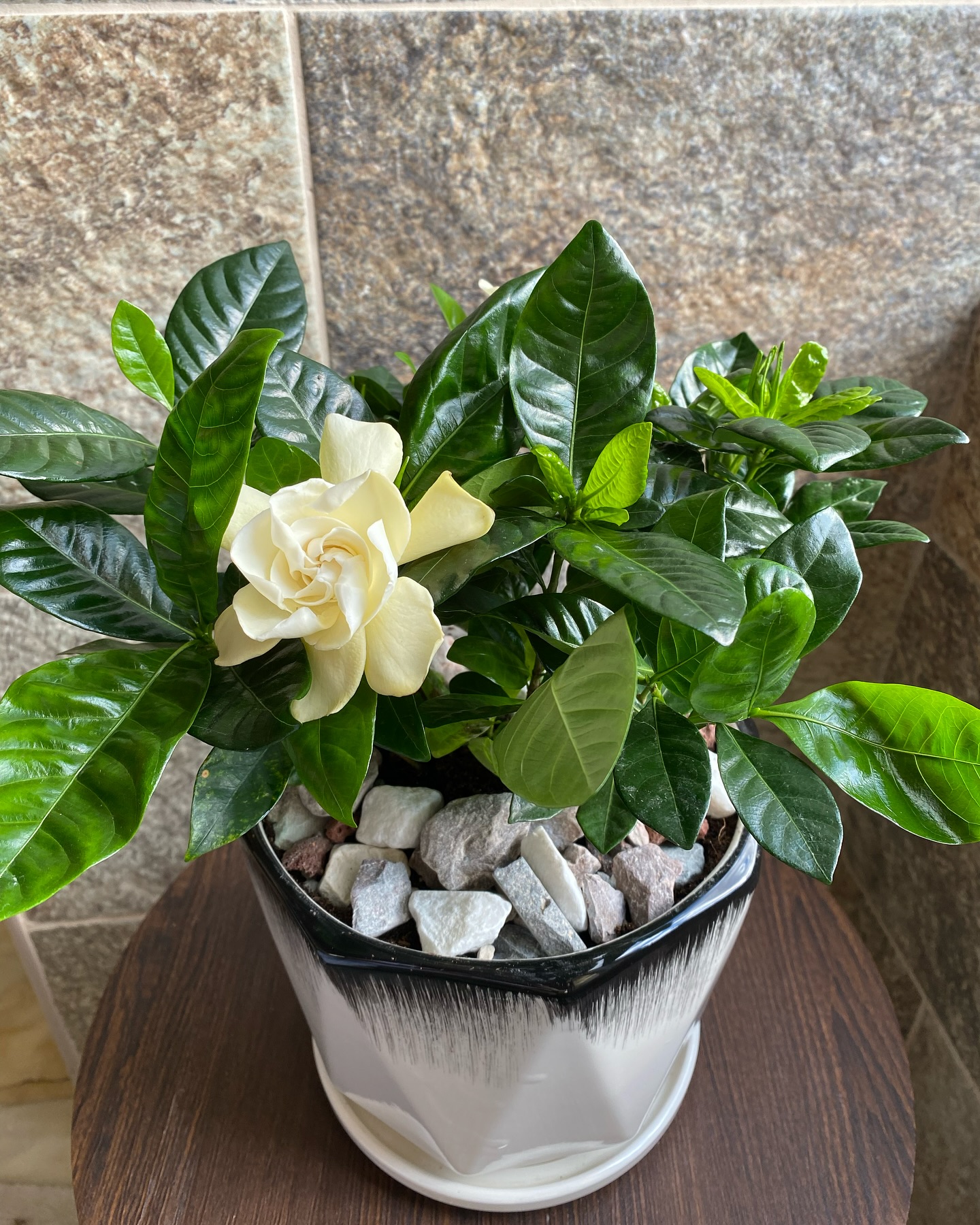
- Why It’s Great: Fragrant white flowers and glossy green leaves.
- Light: Bright, indirect light. Some morning sun is beneficial.
- Watering: Keep the soil consistently moist; avoid overwatering.
- Size: Can reach 2-6 feet tall indoors.
- Soil: Well-draining, acidic potting mix.
- Feeding: Fertilize every 4-6 weeks during the growing season.
- Flowering: Fragrant white flowers.
- Ease of growing rating: Moderate.







